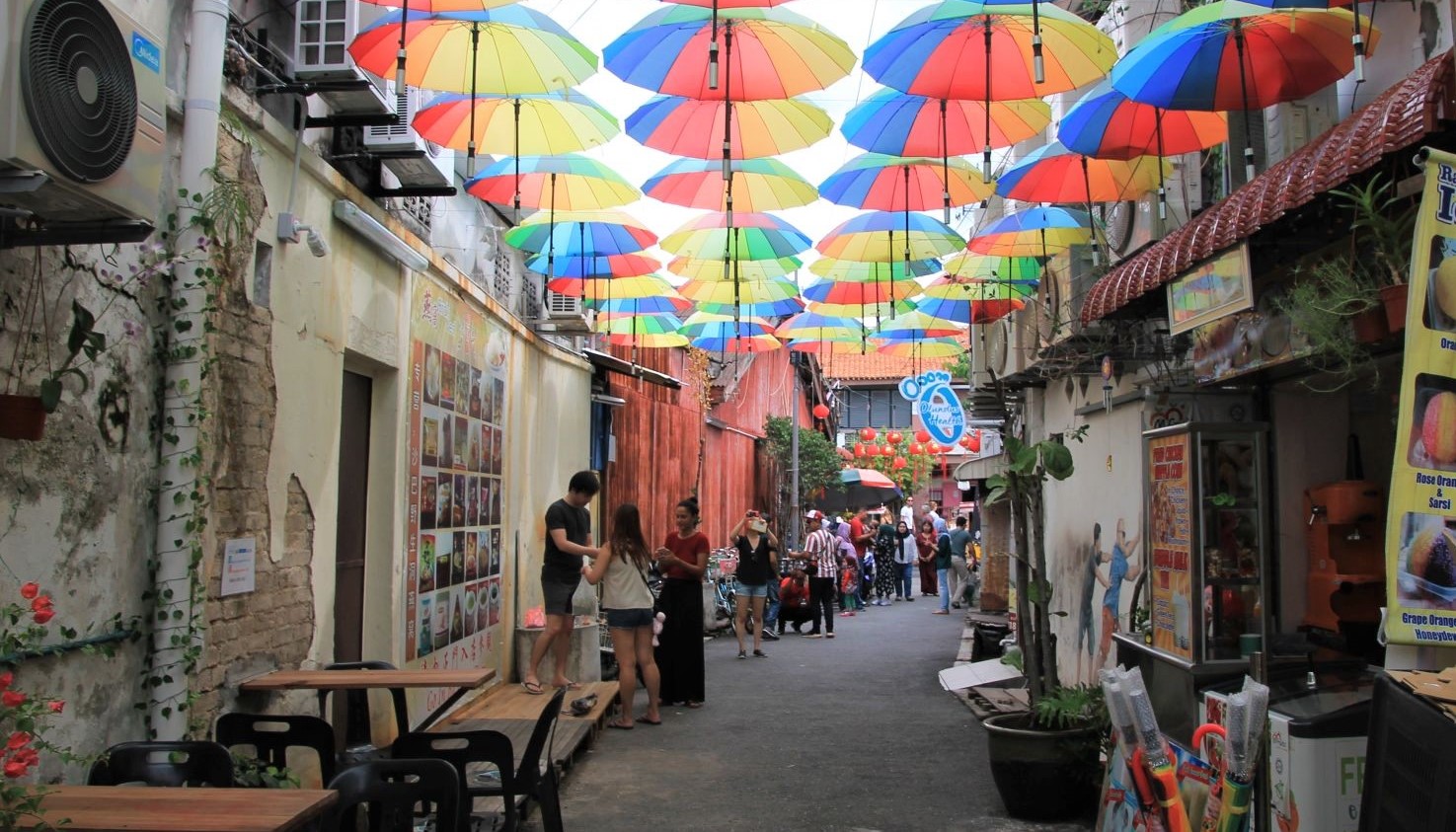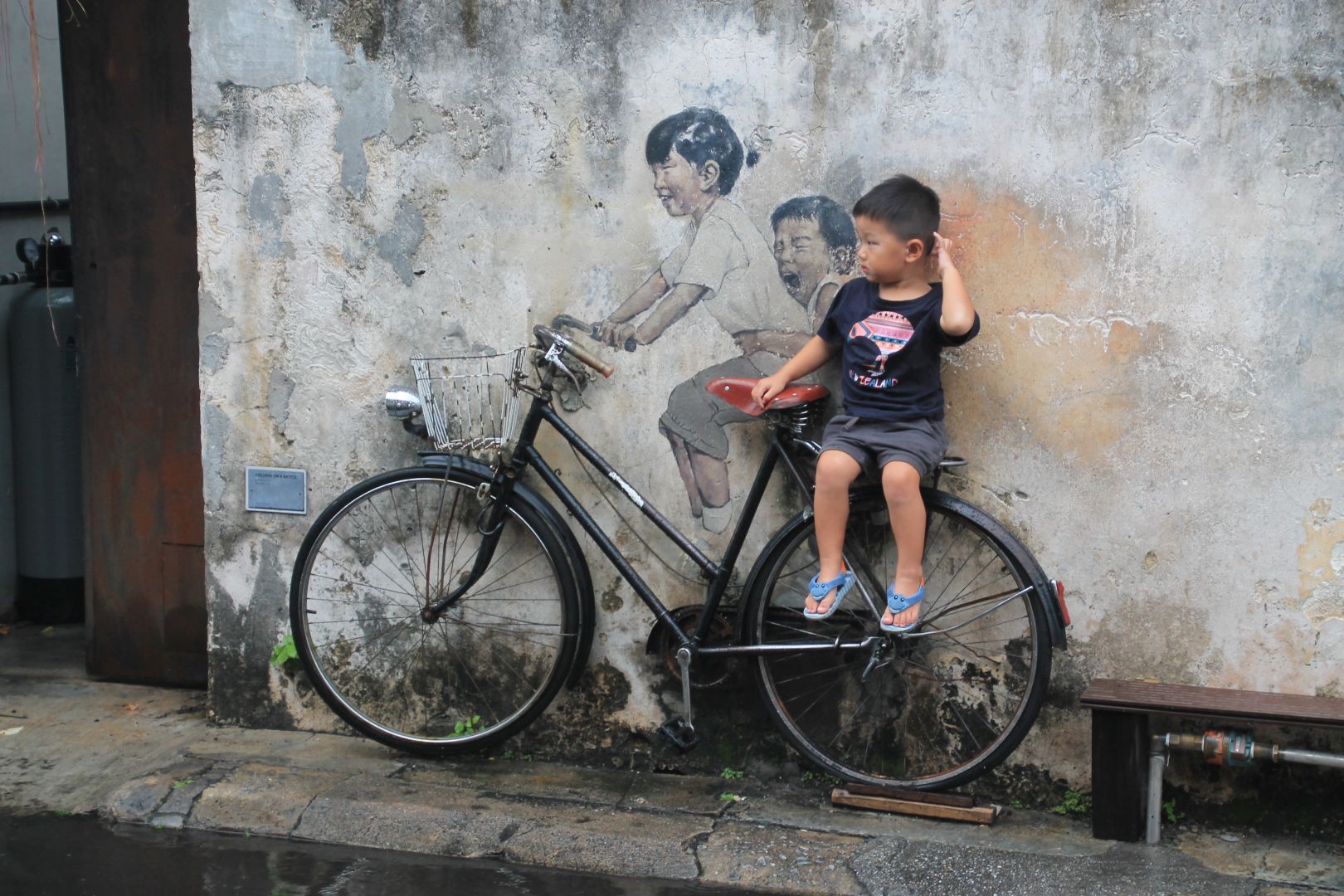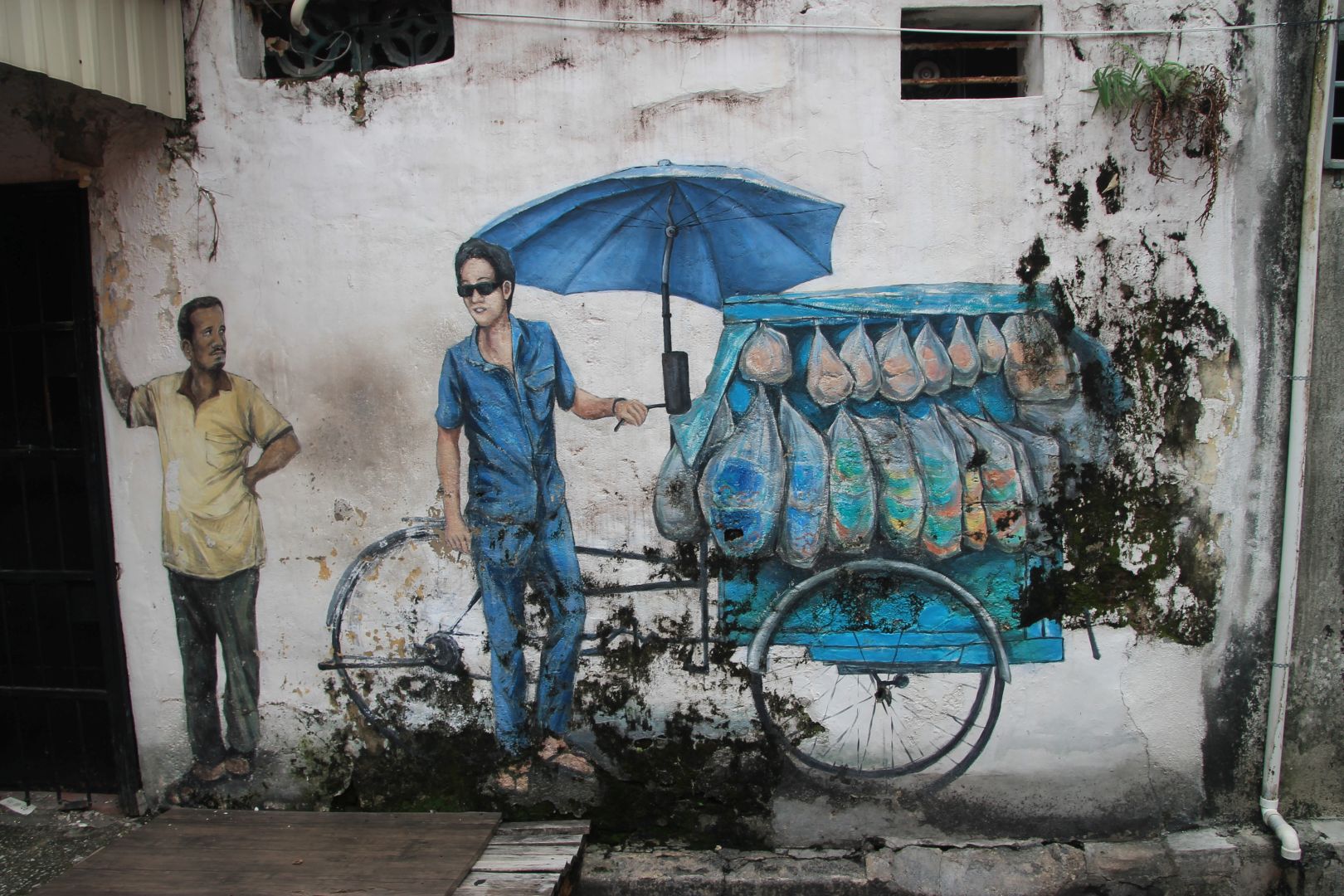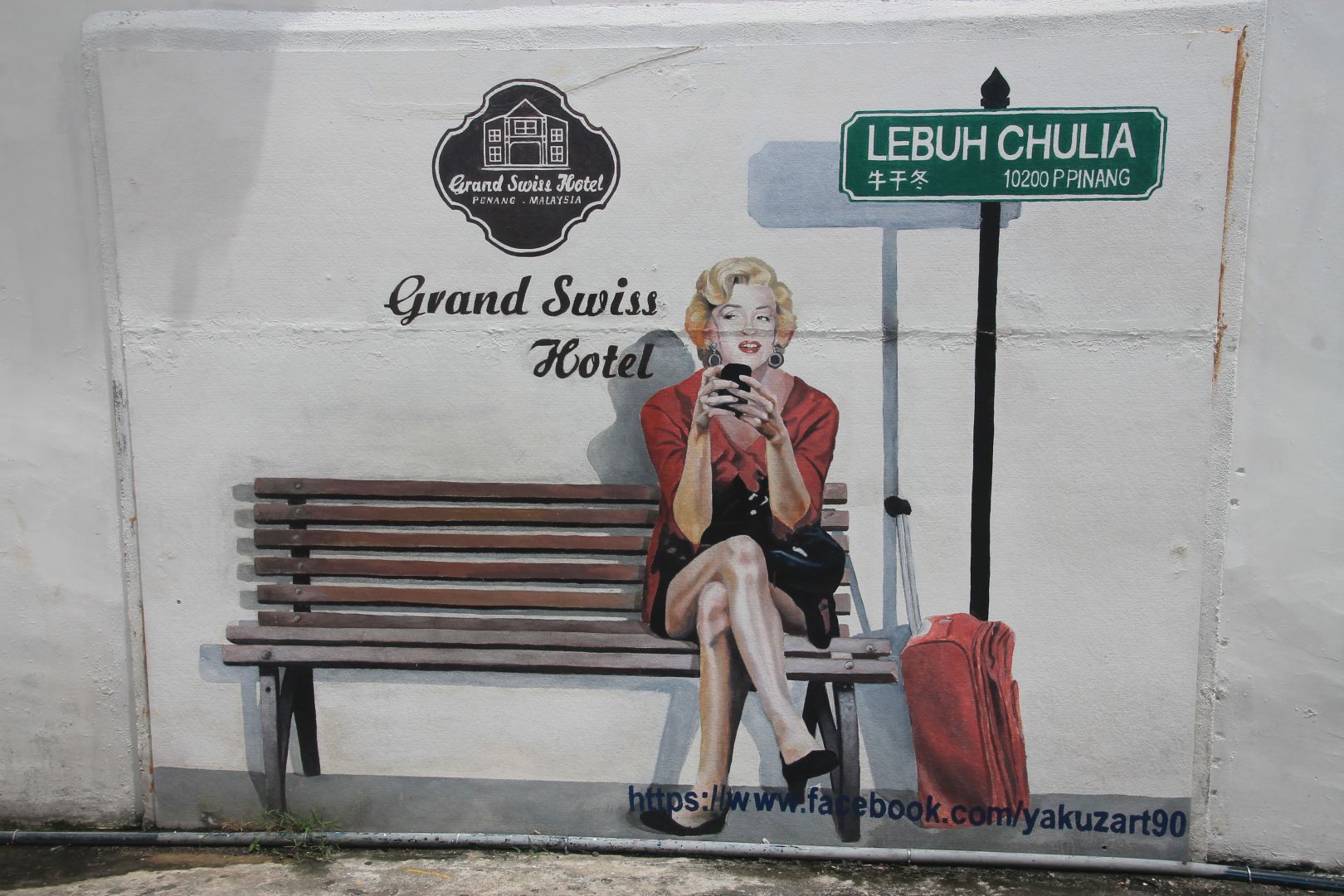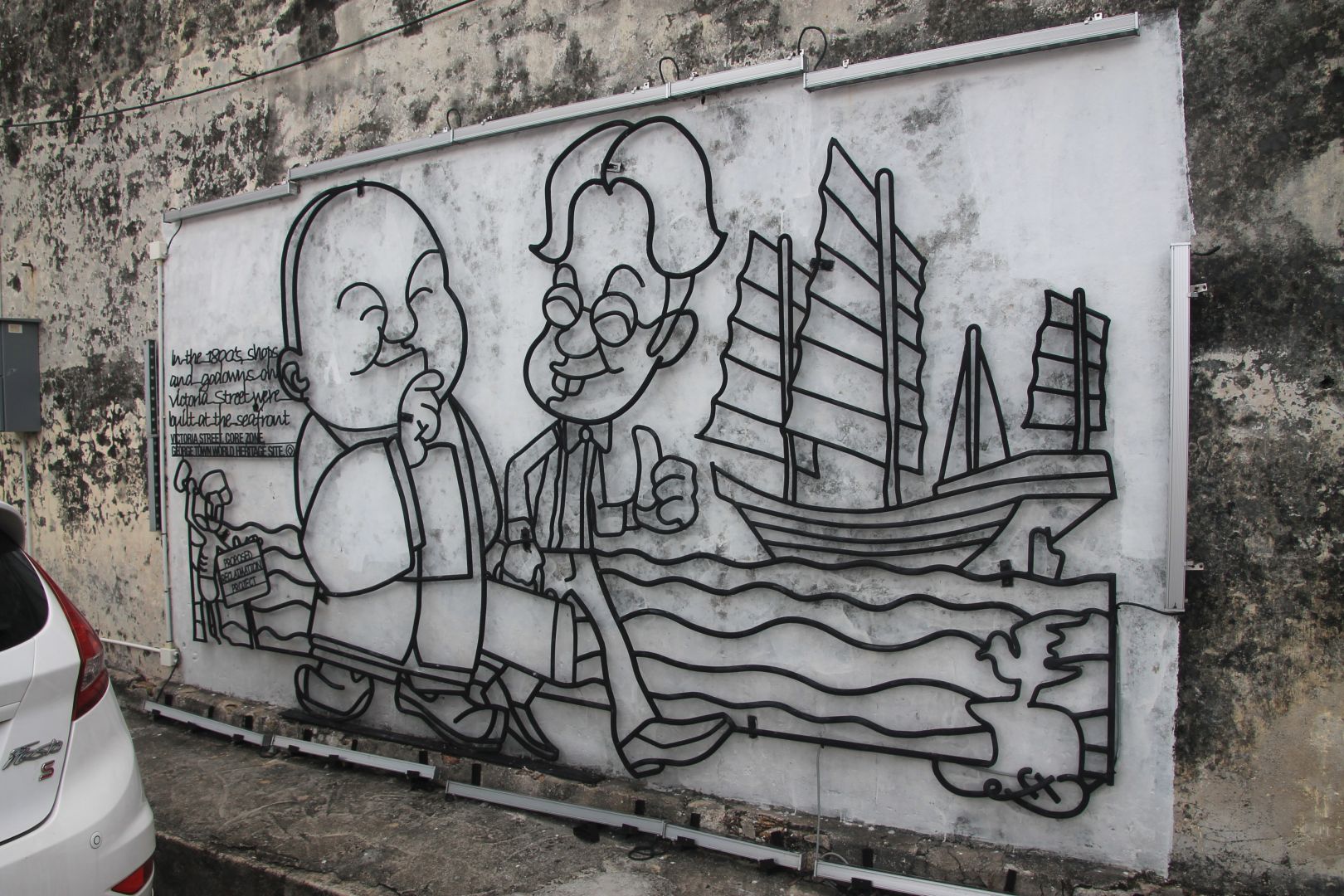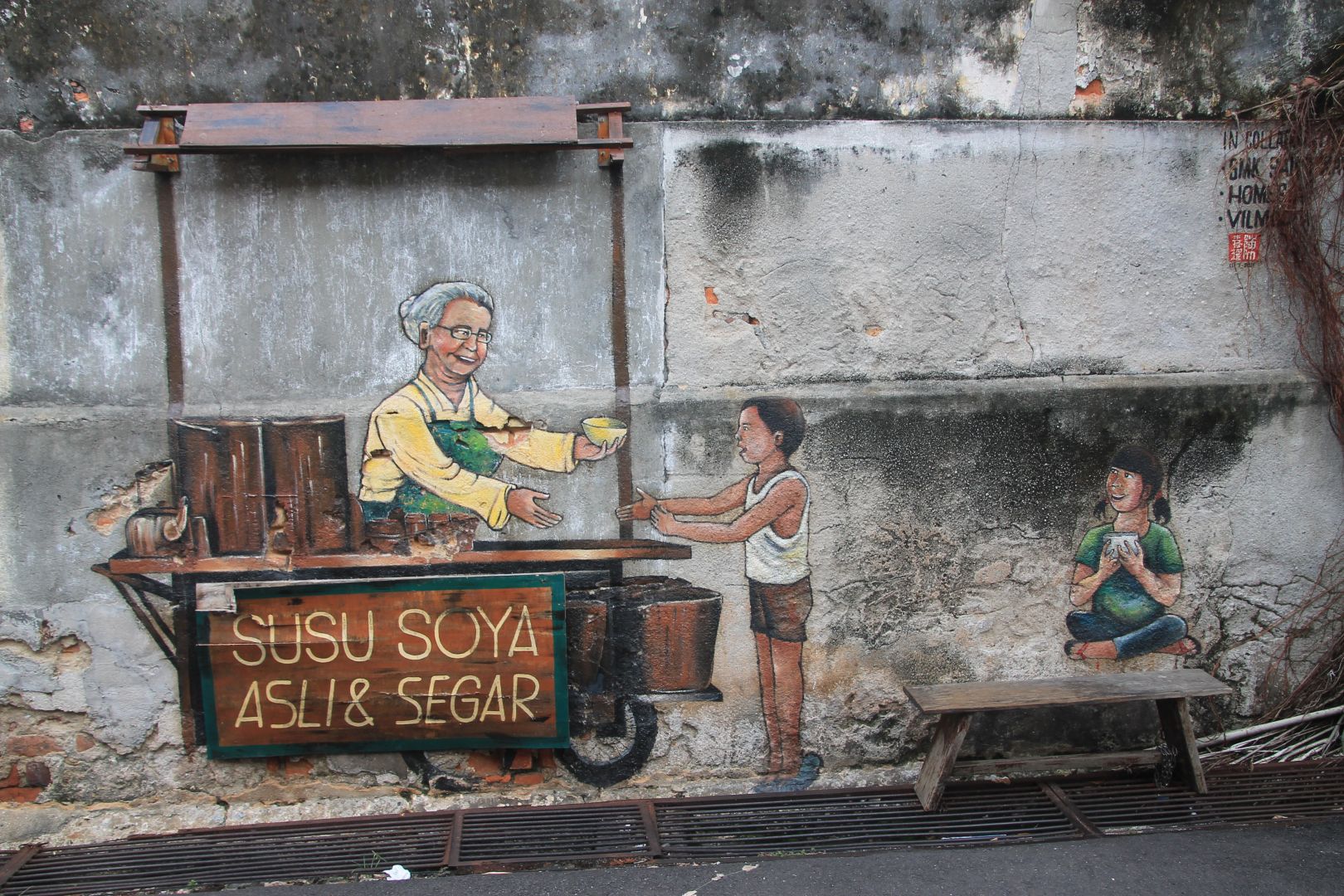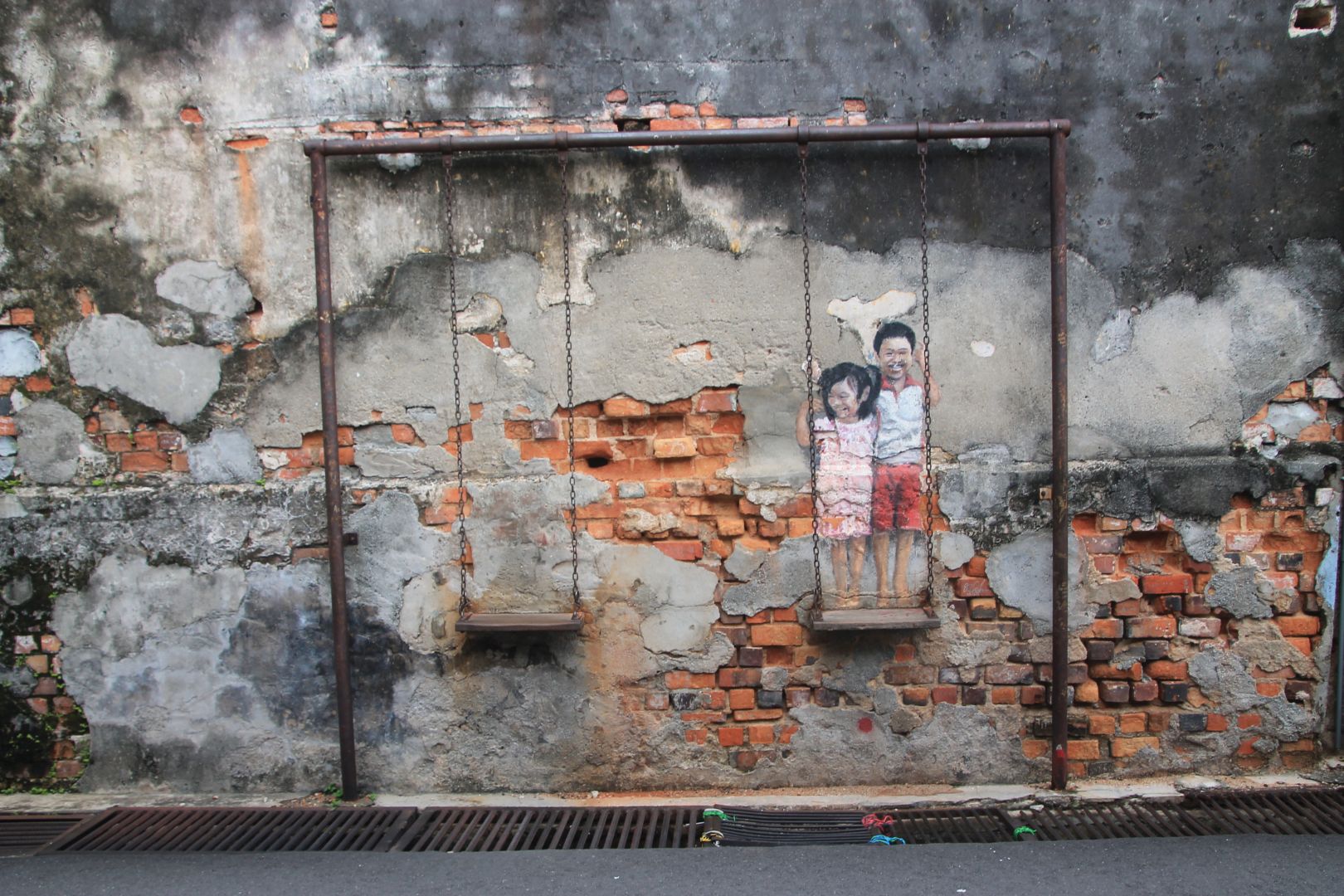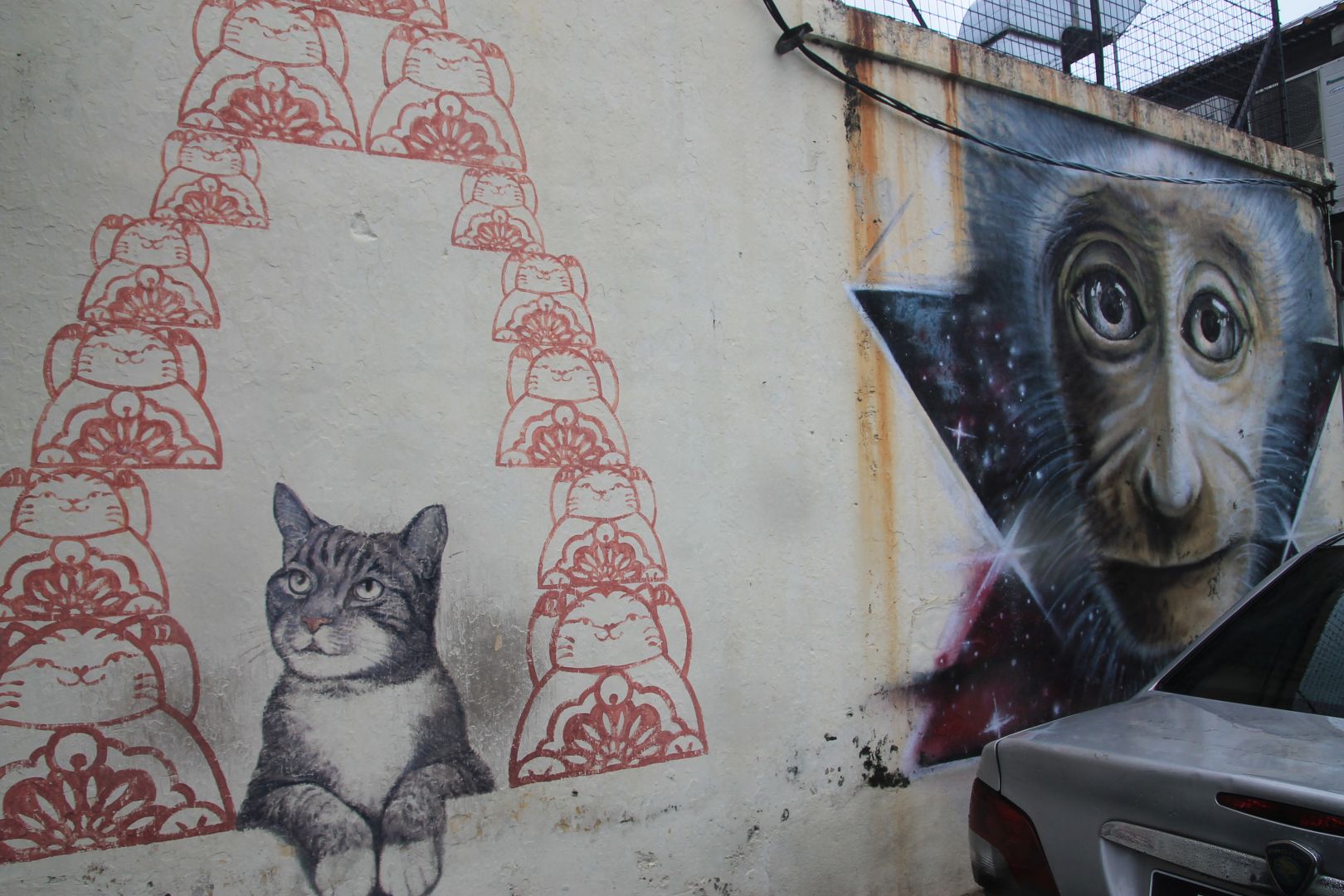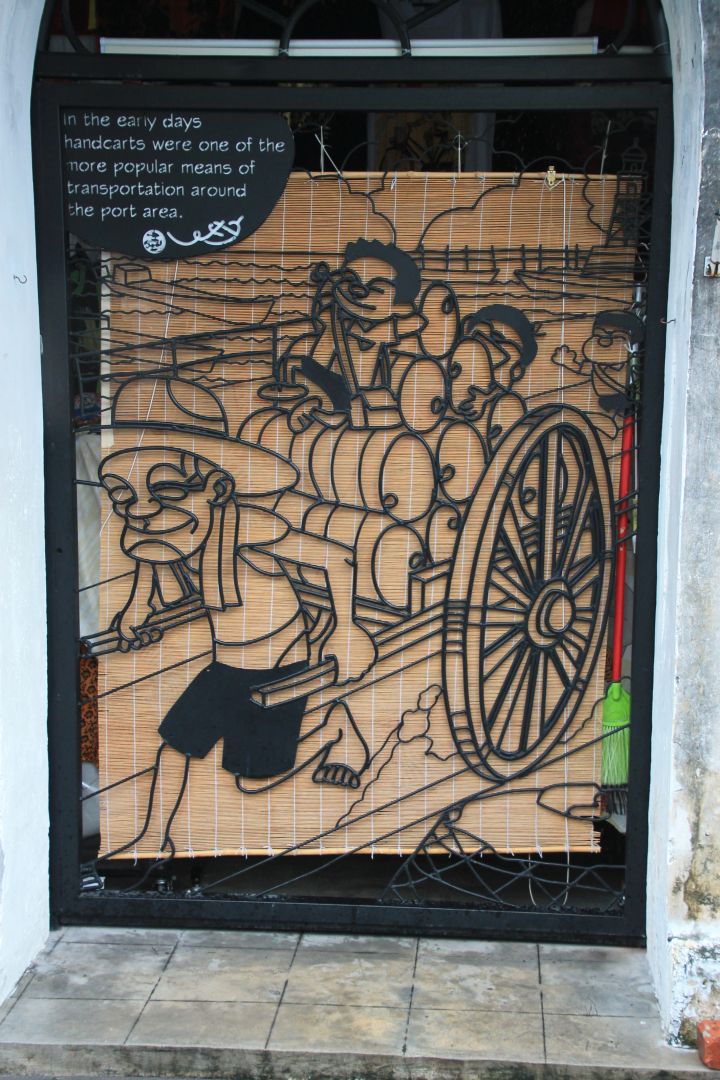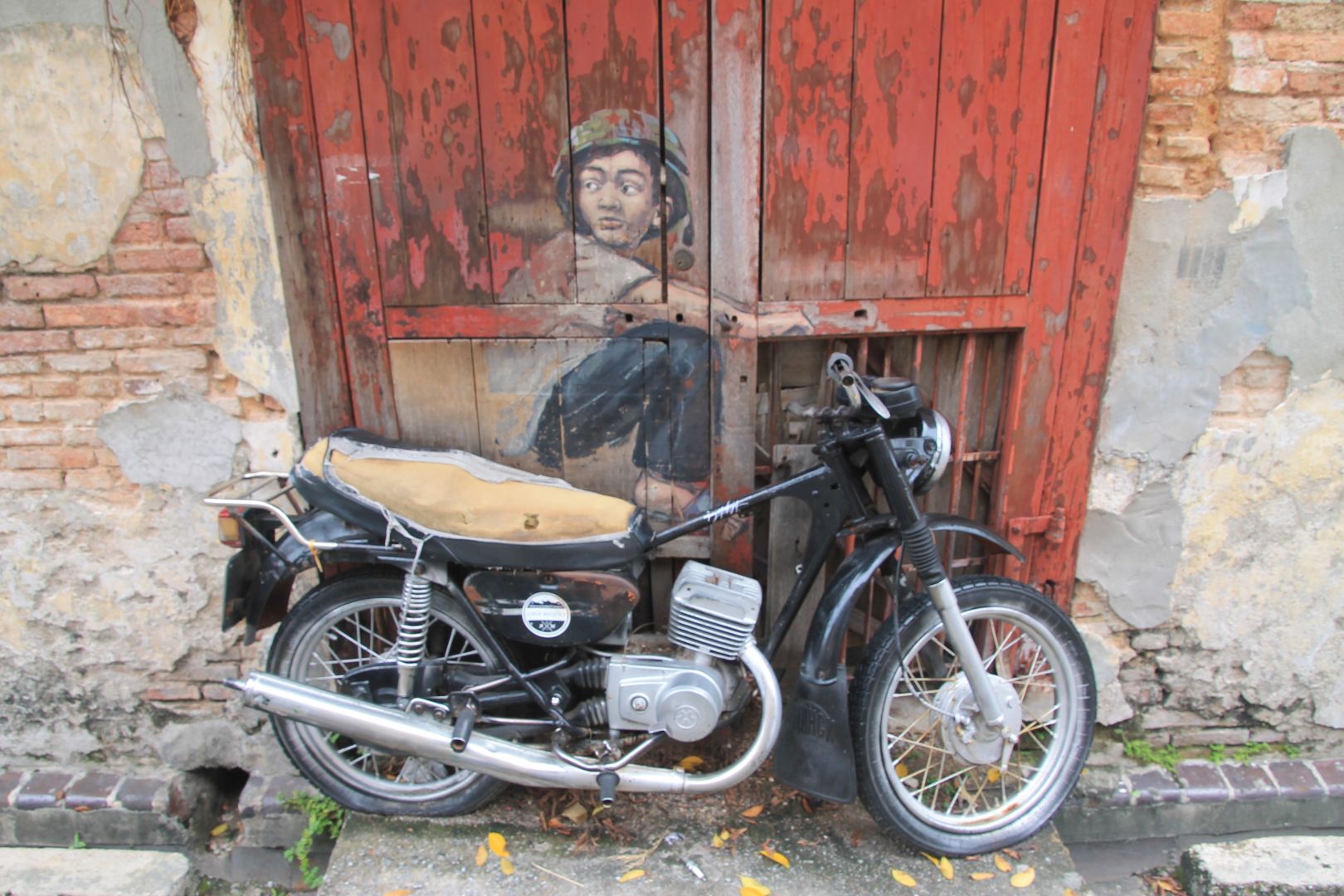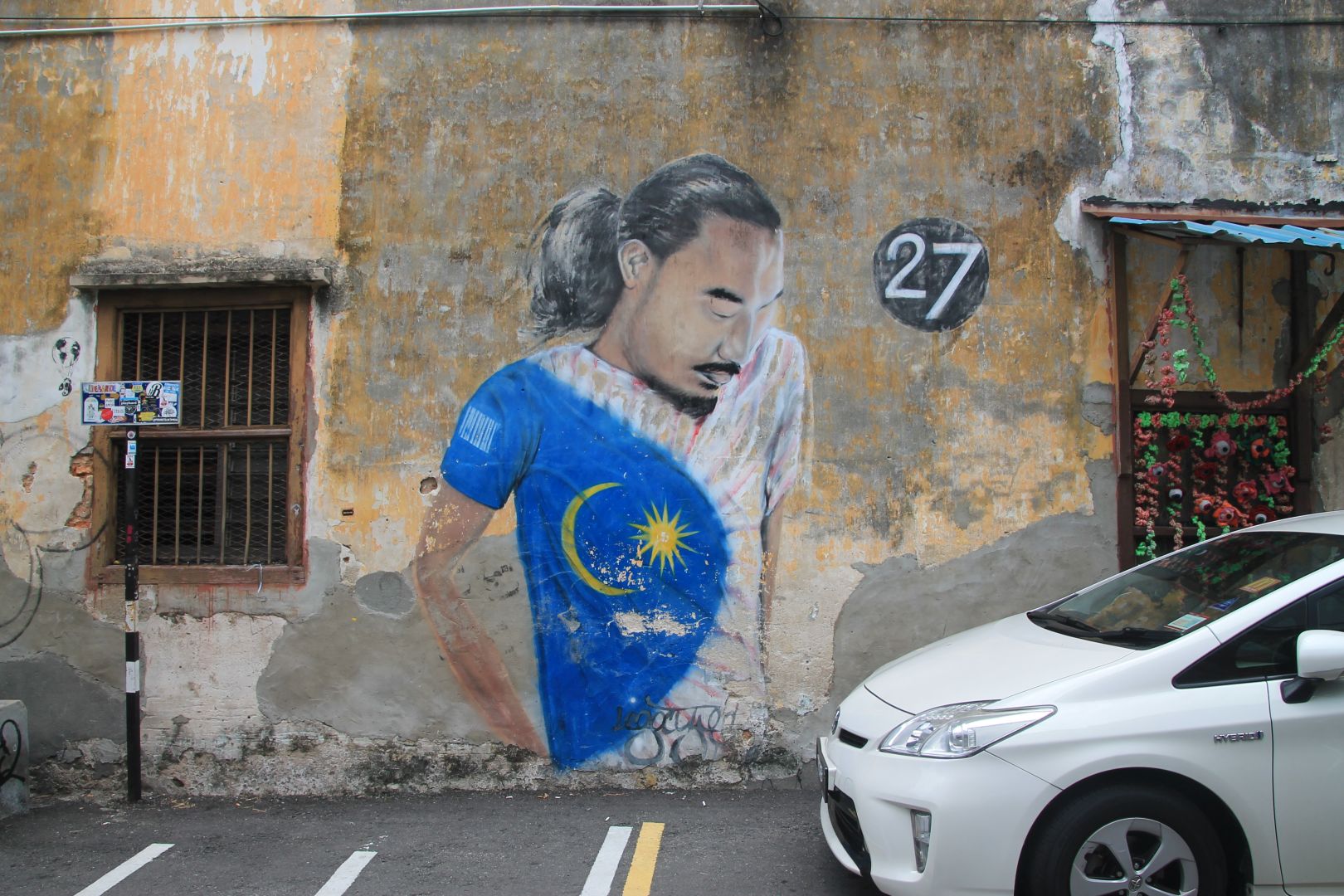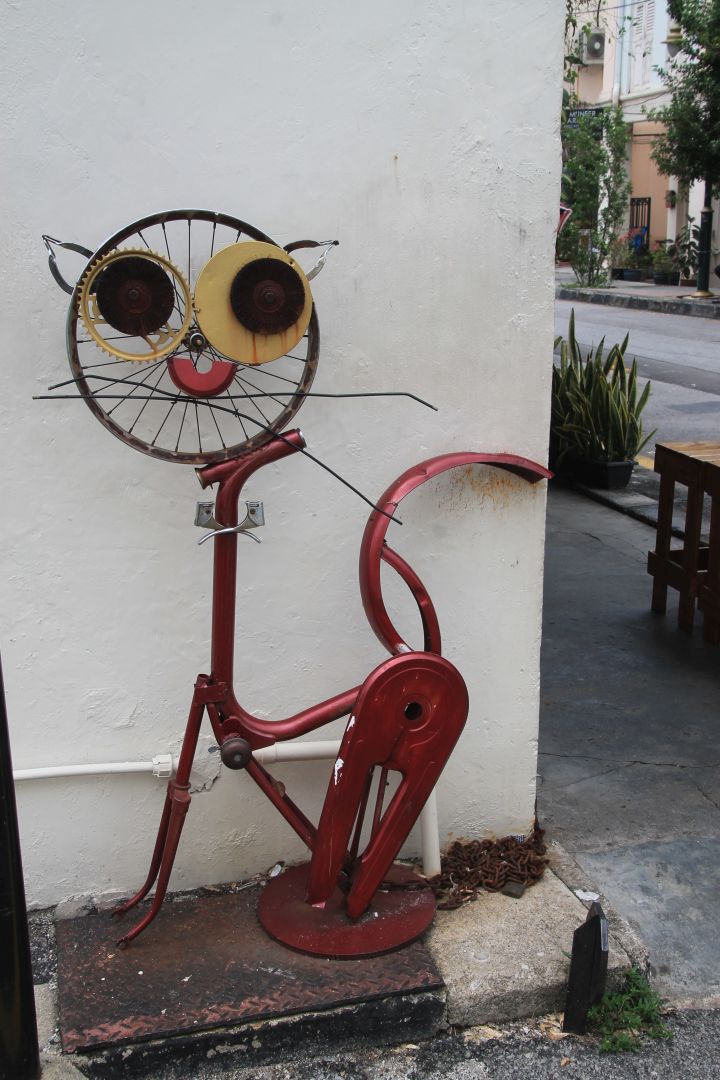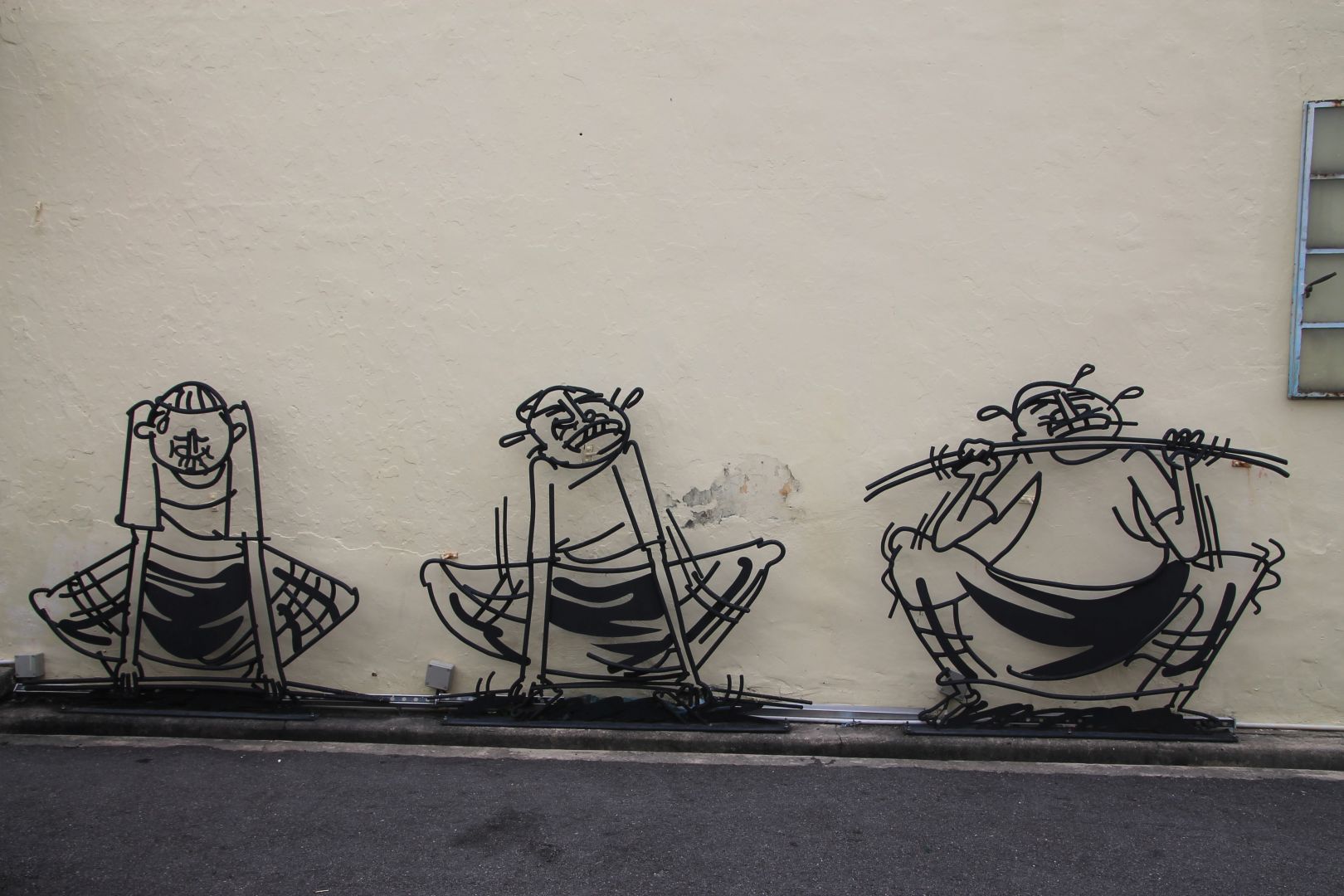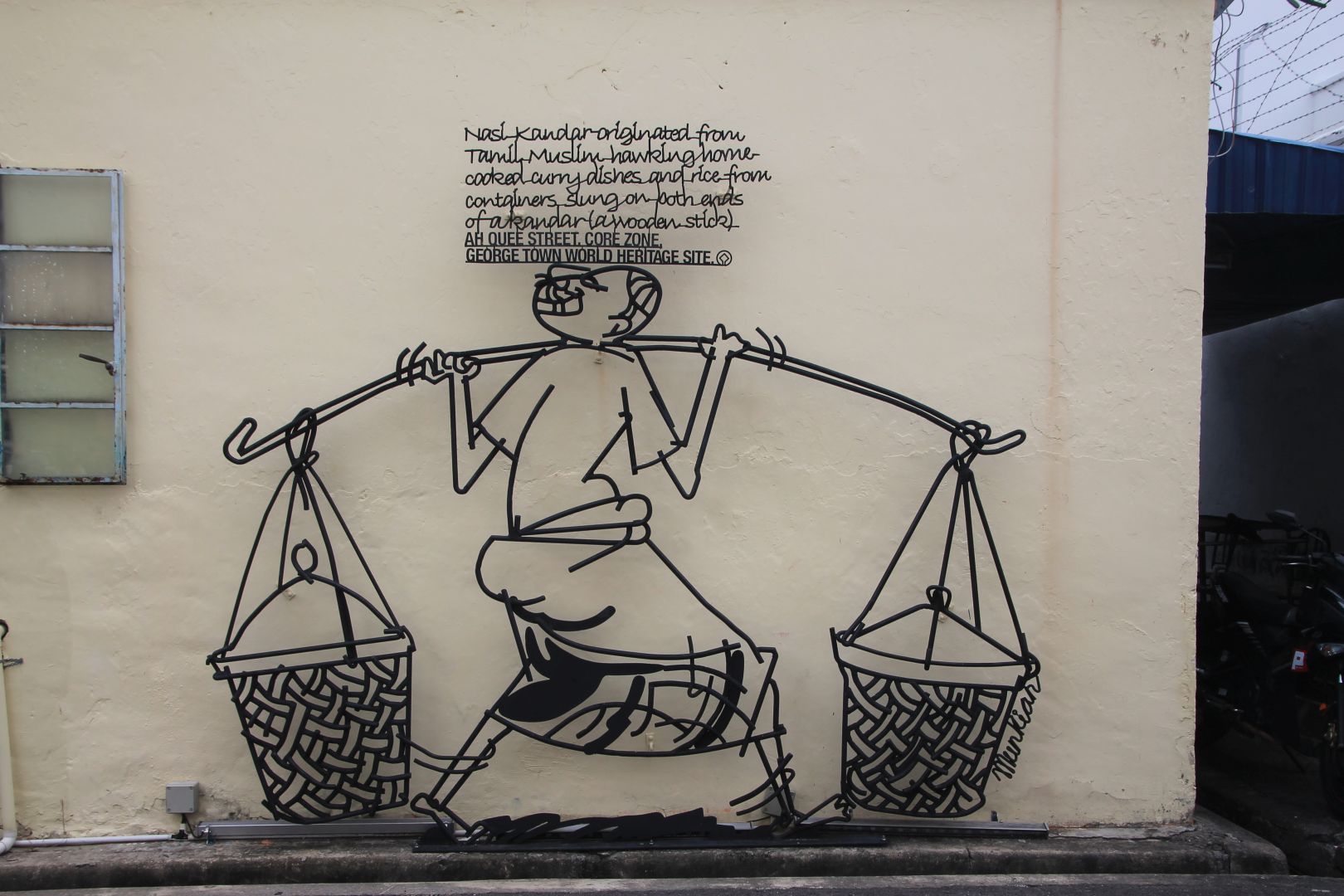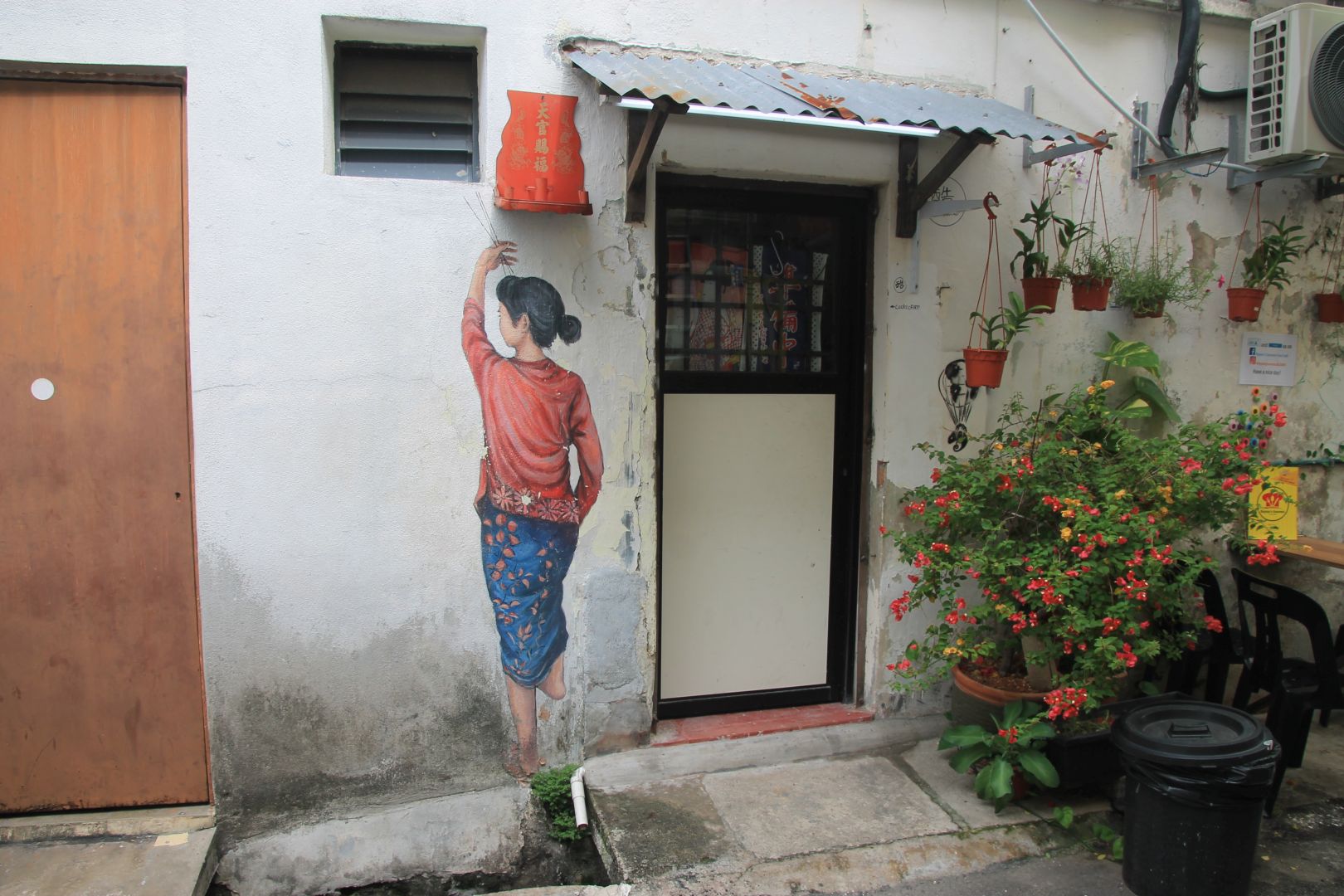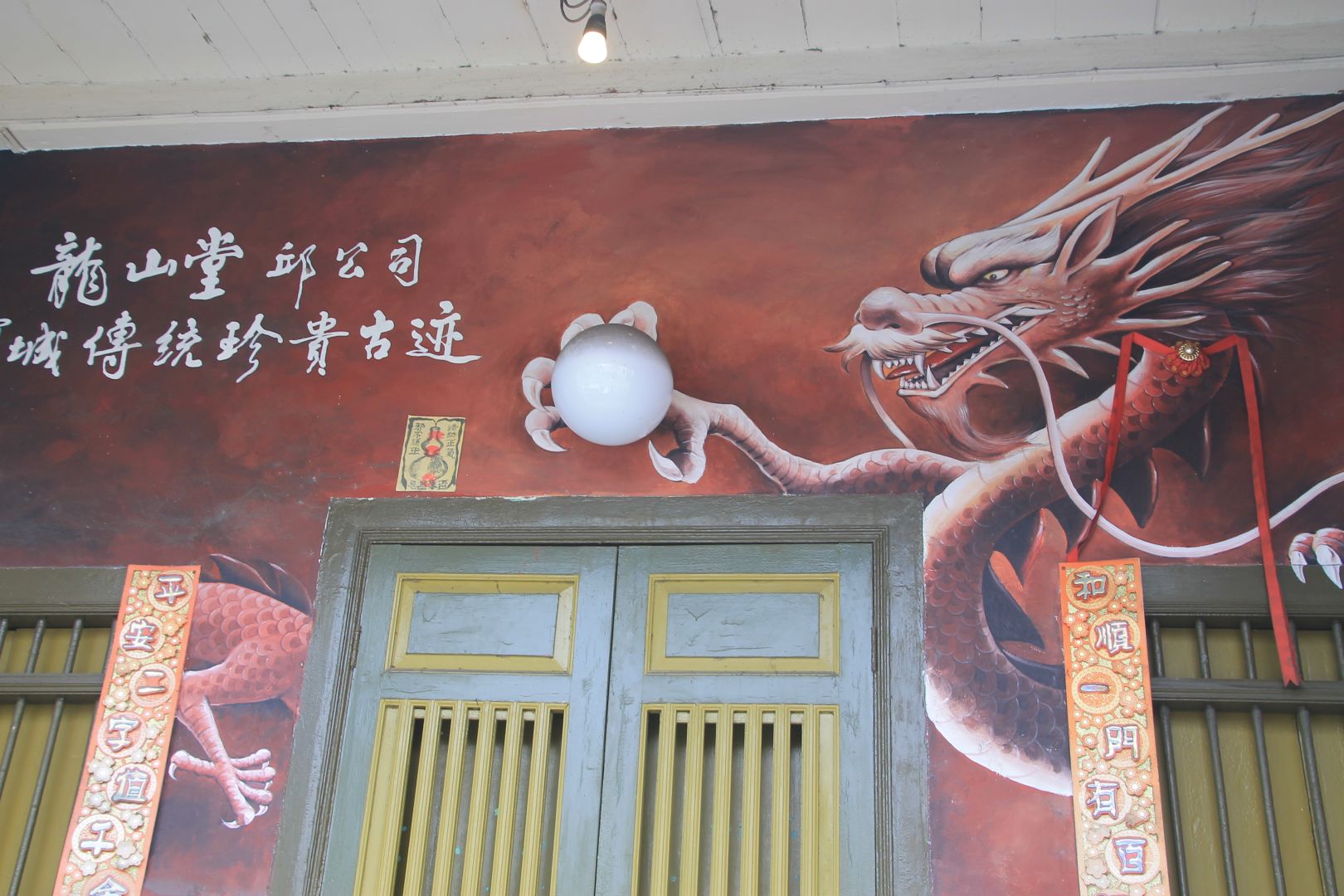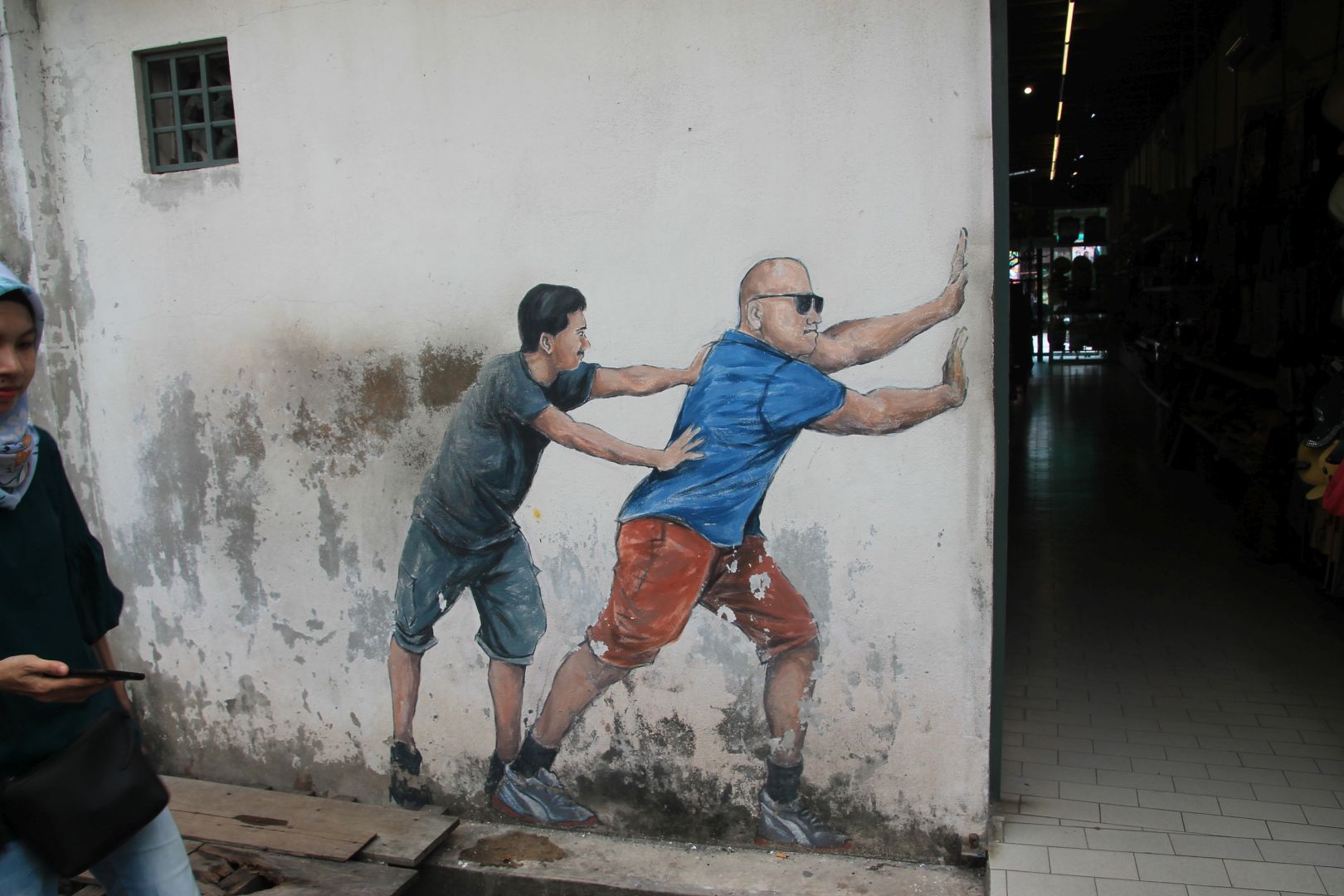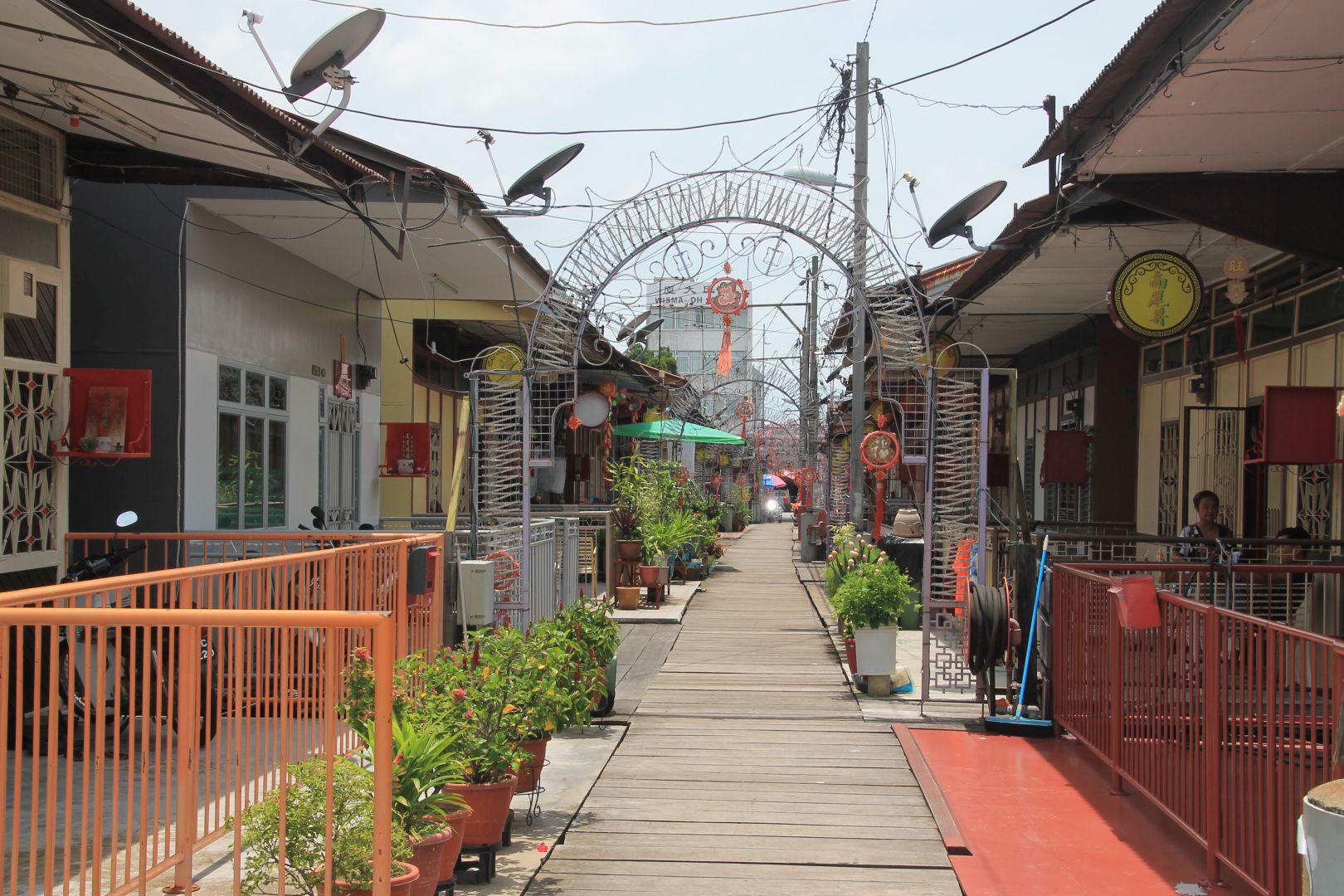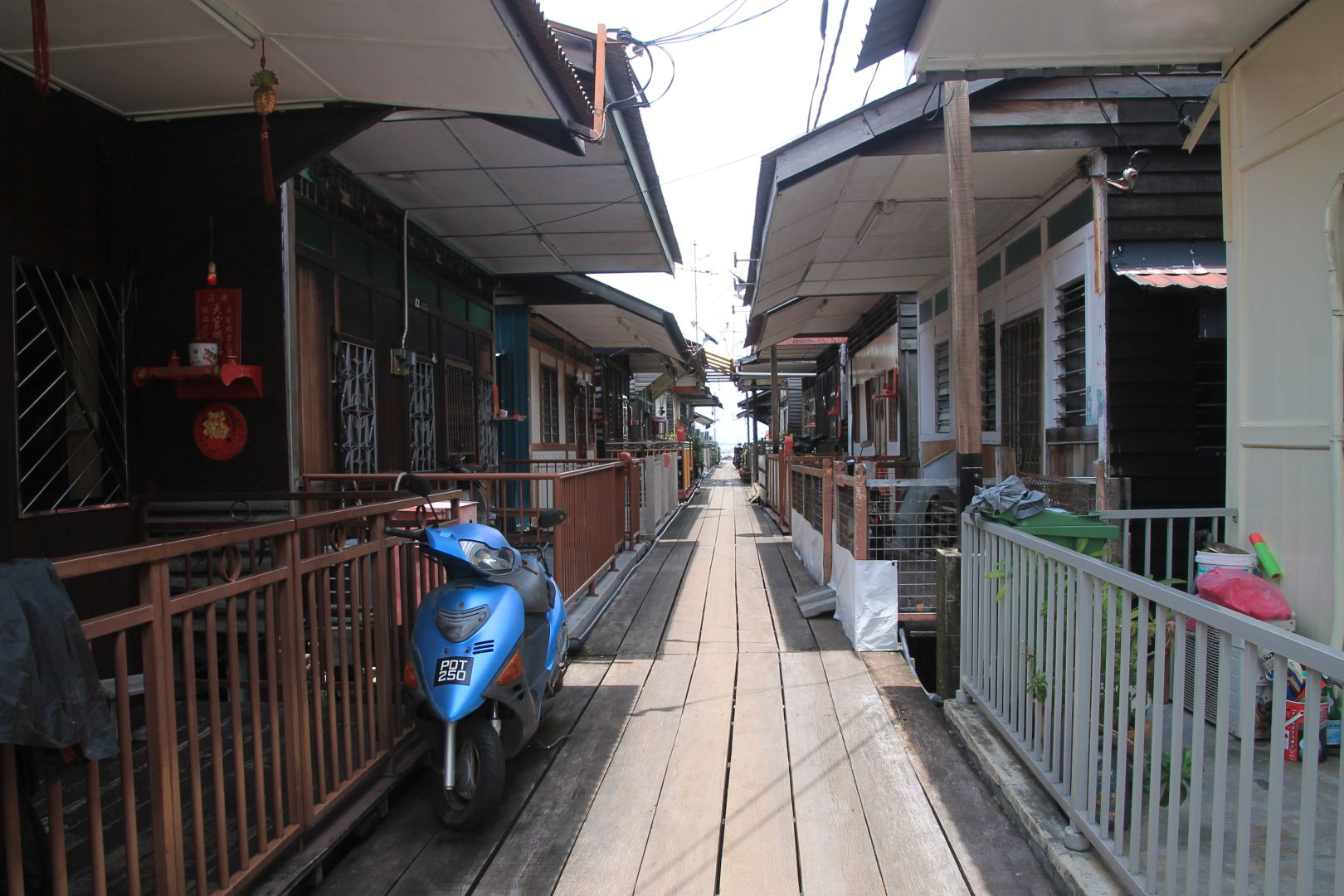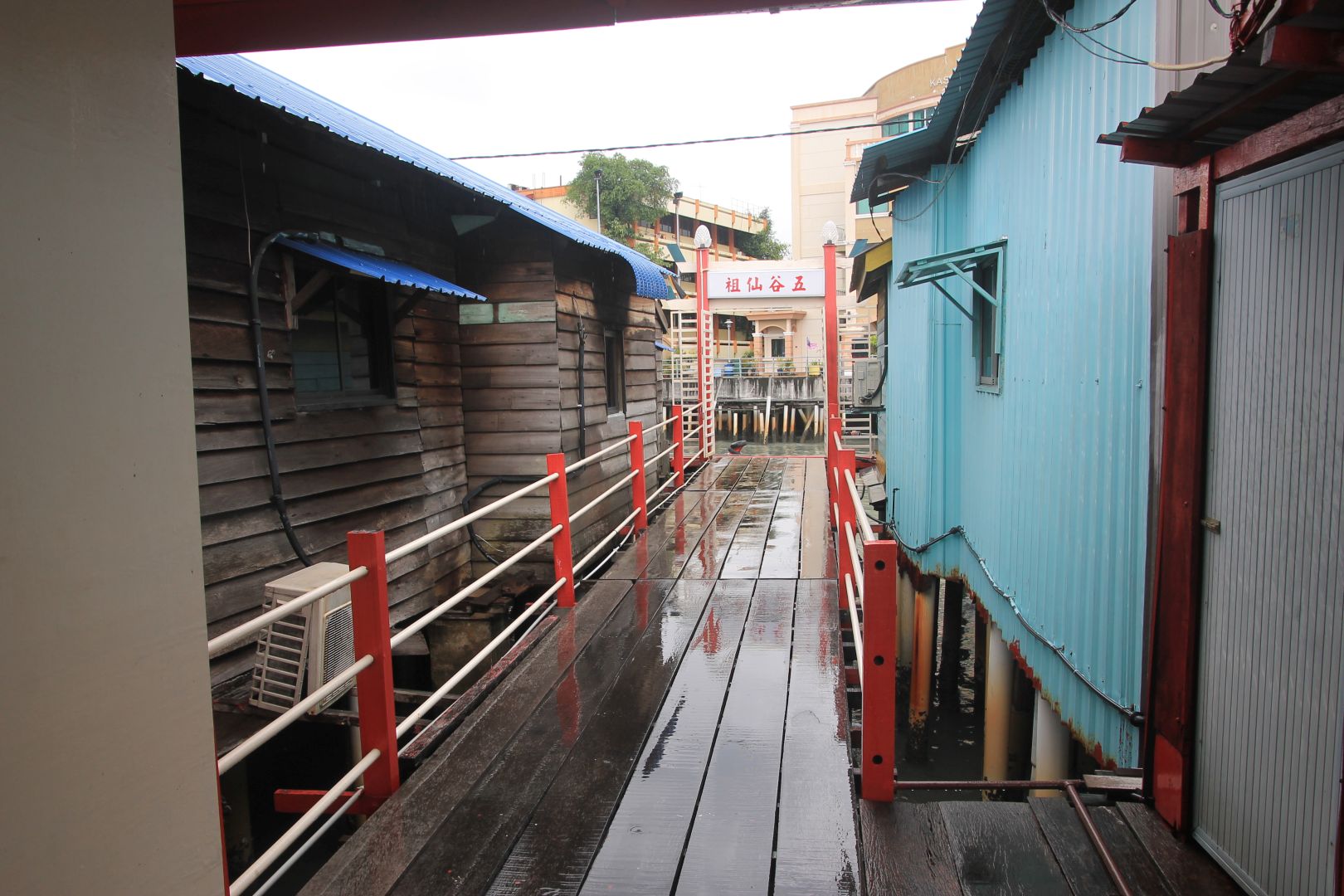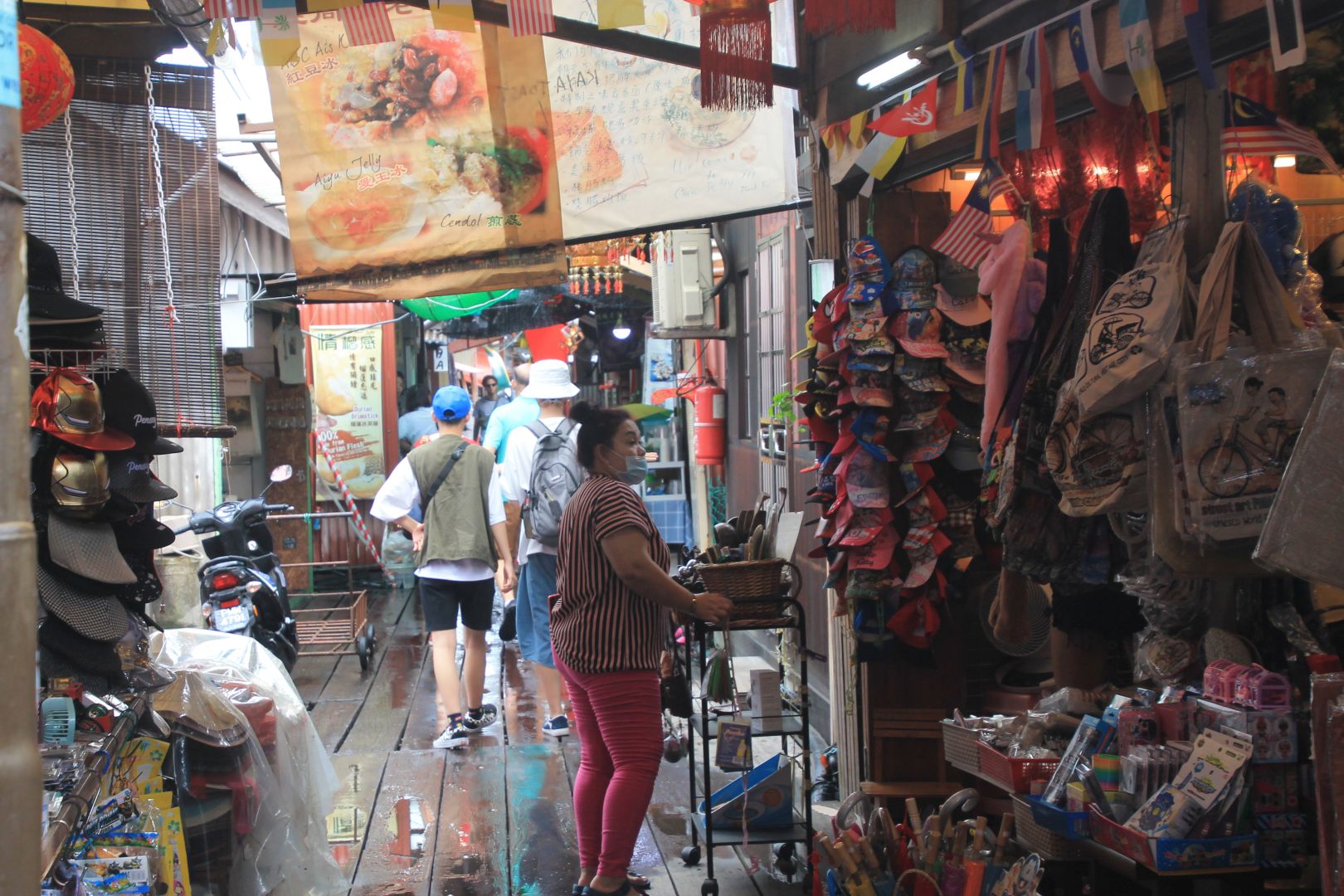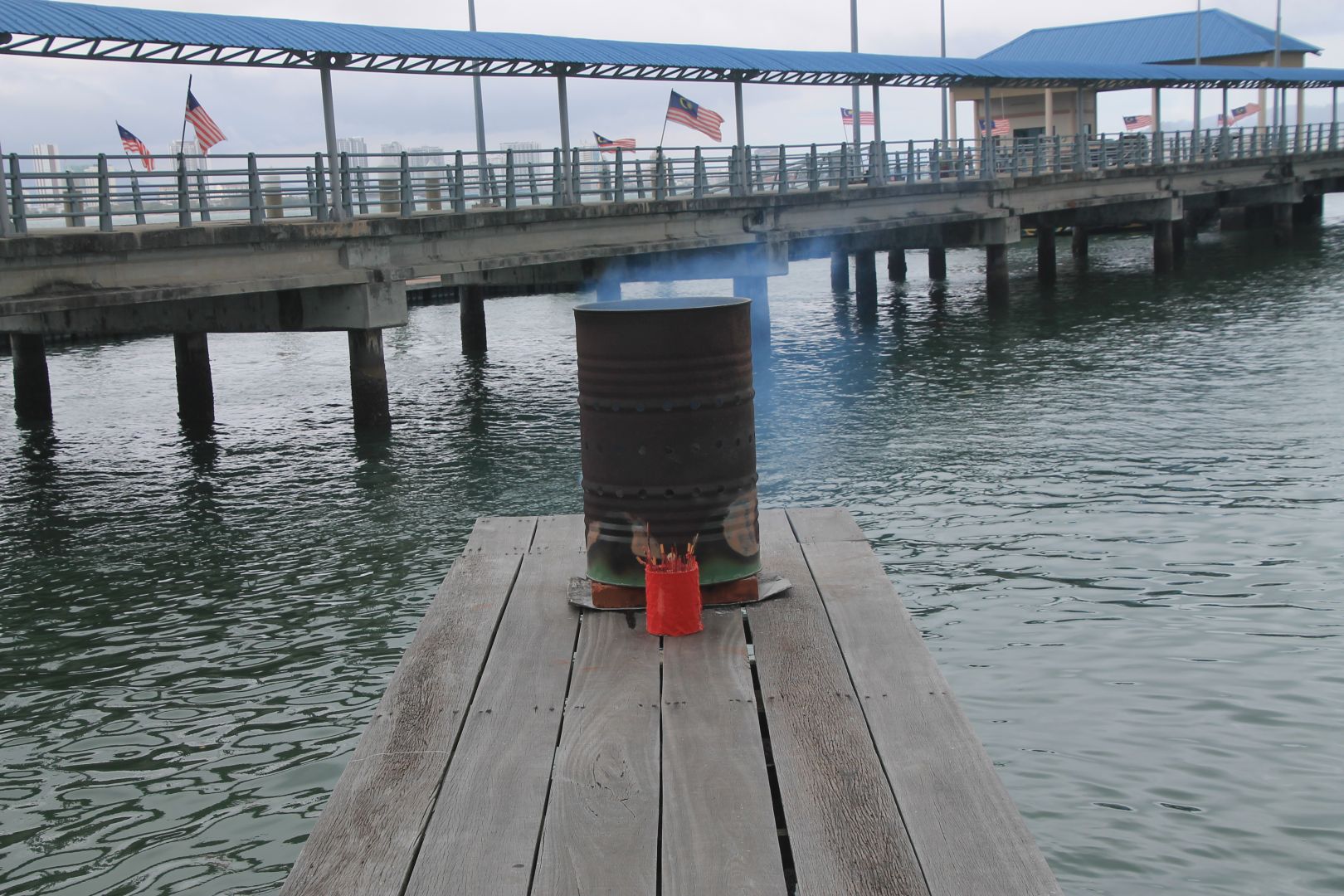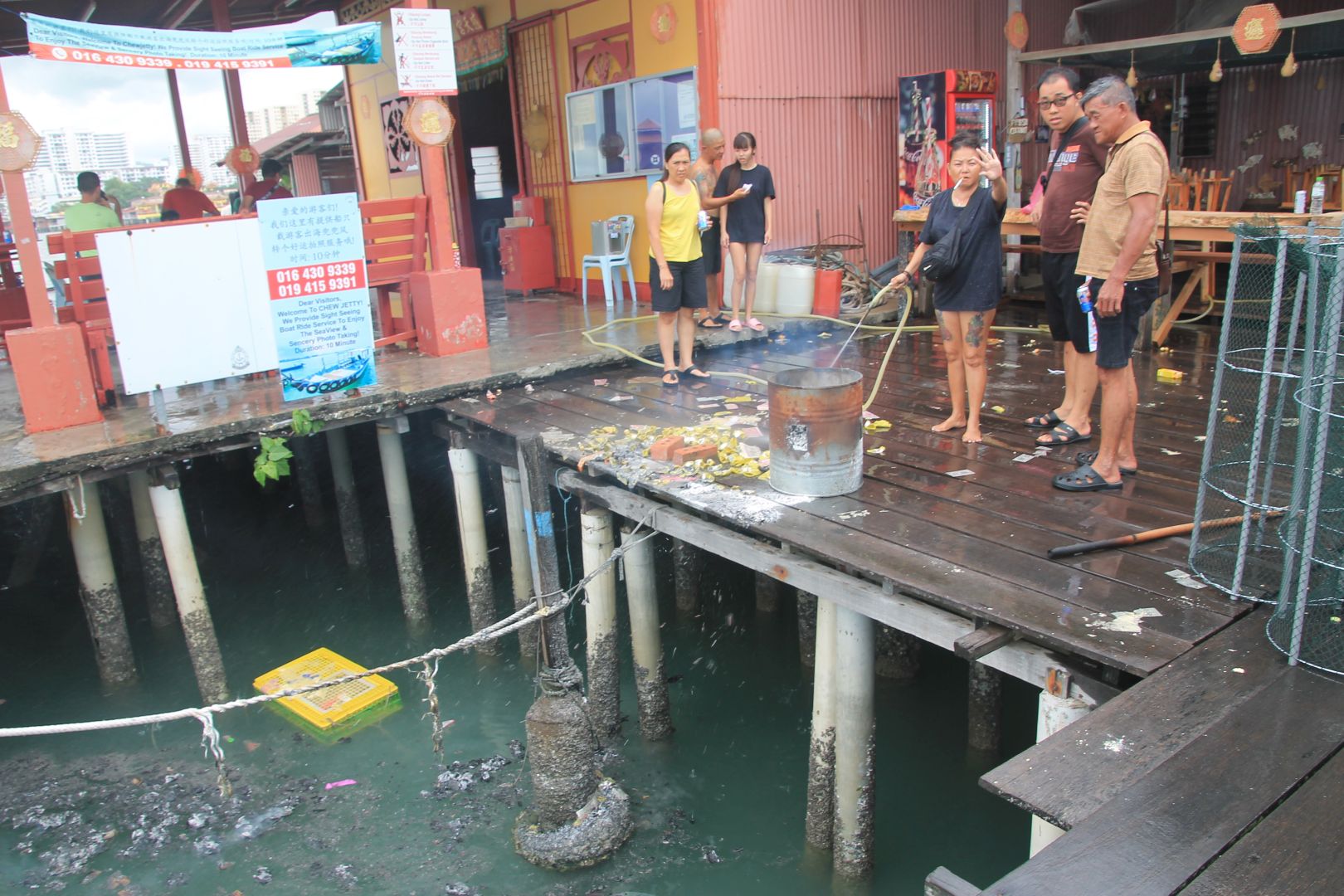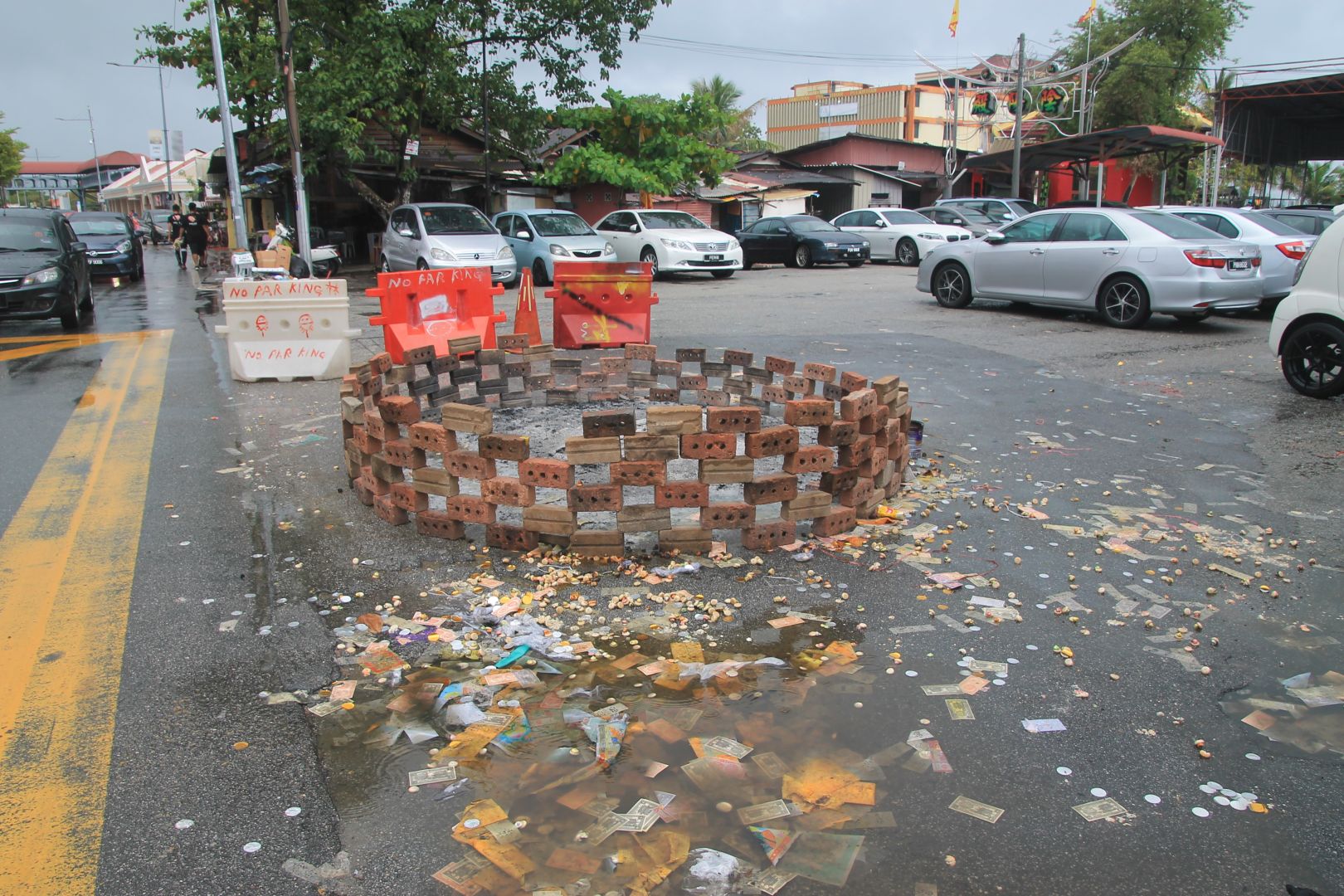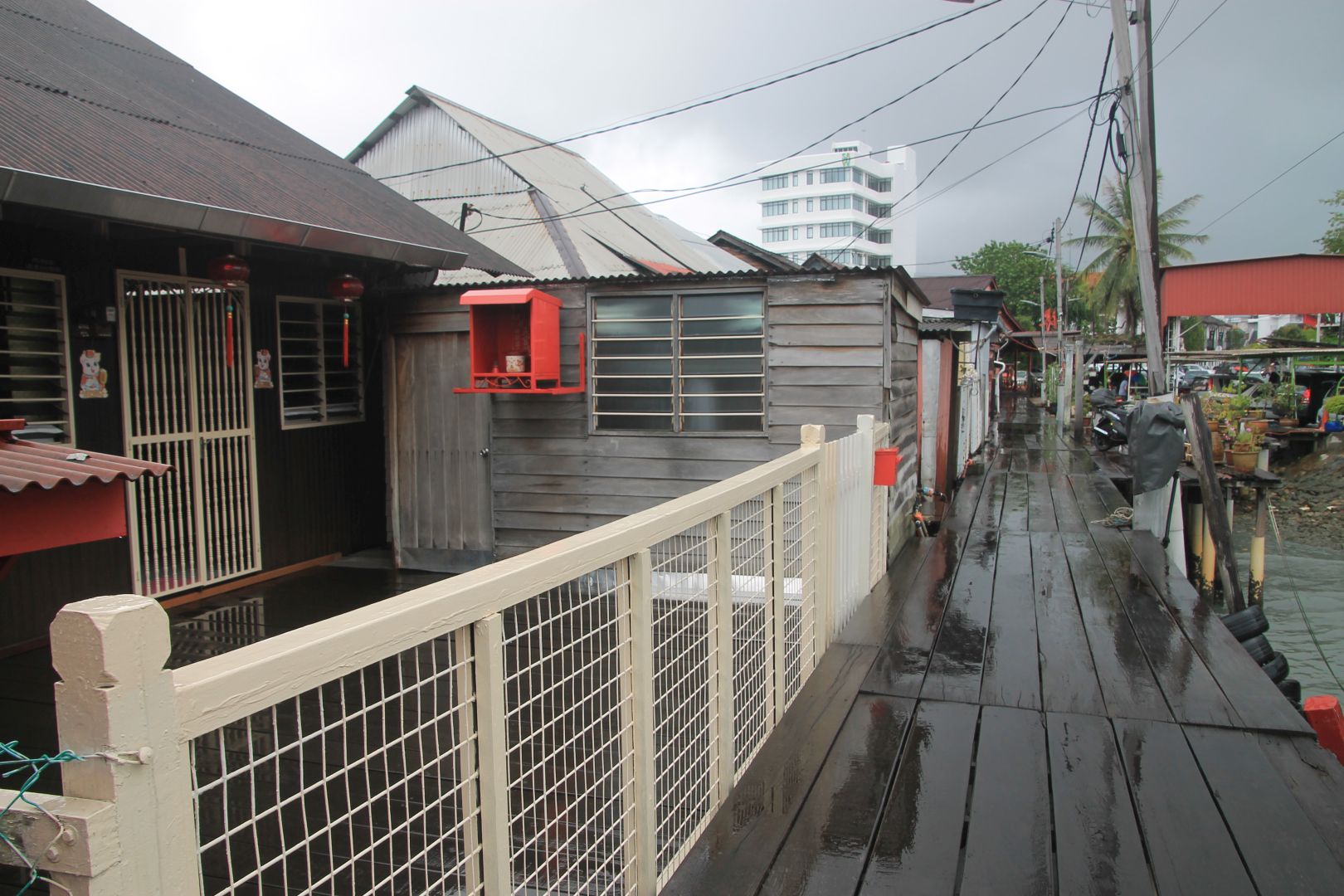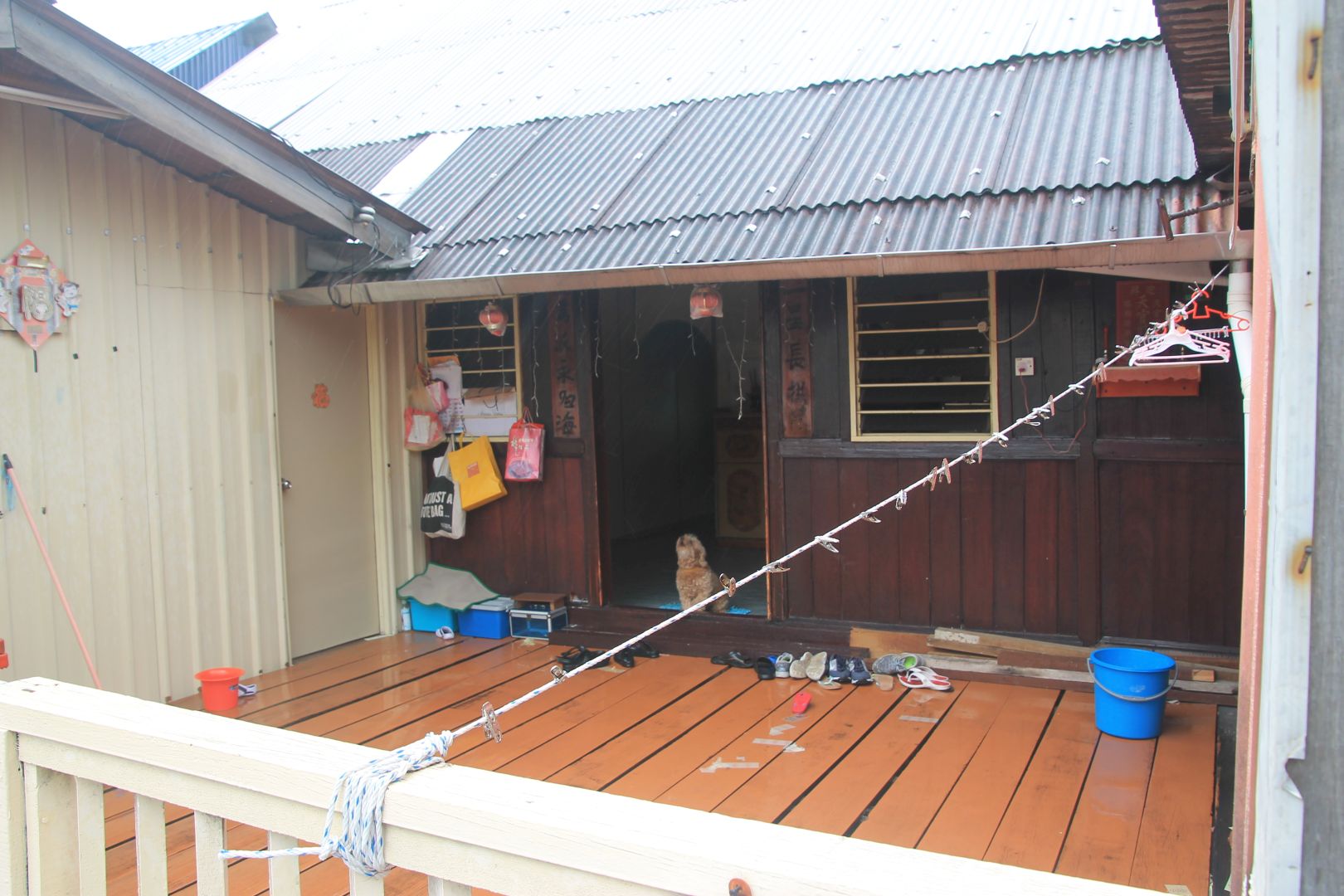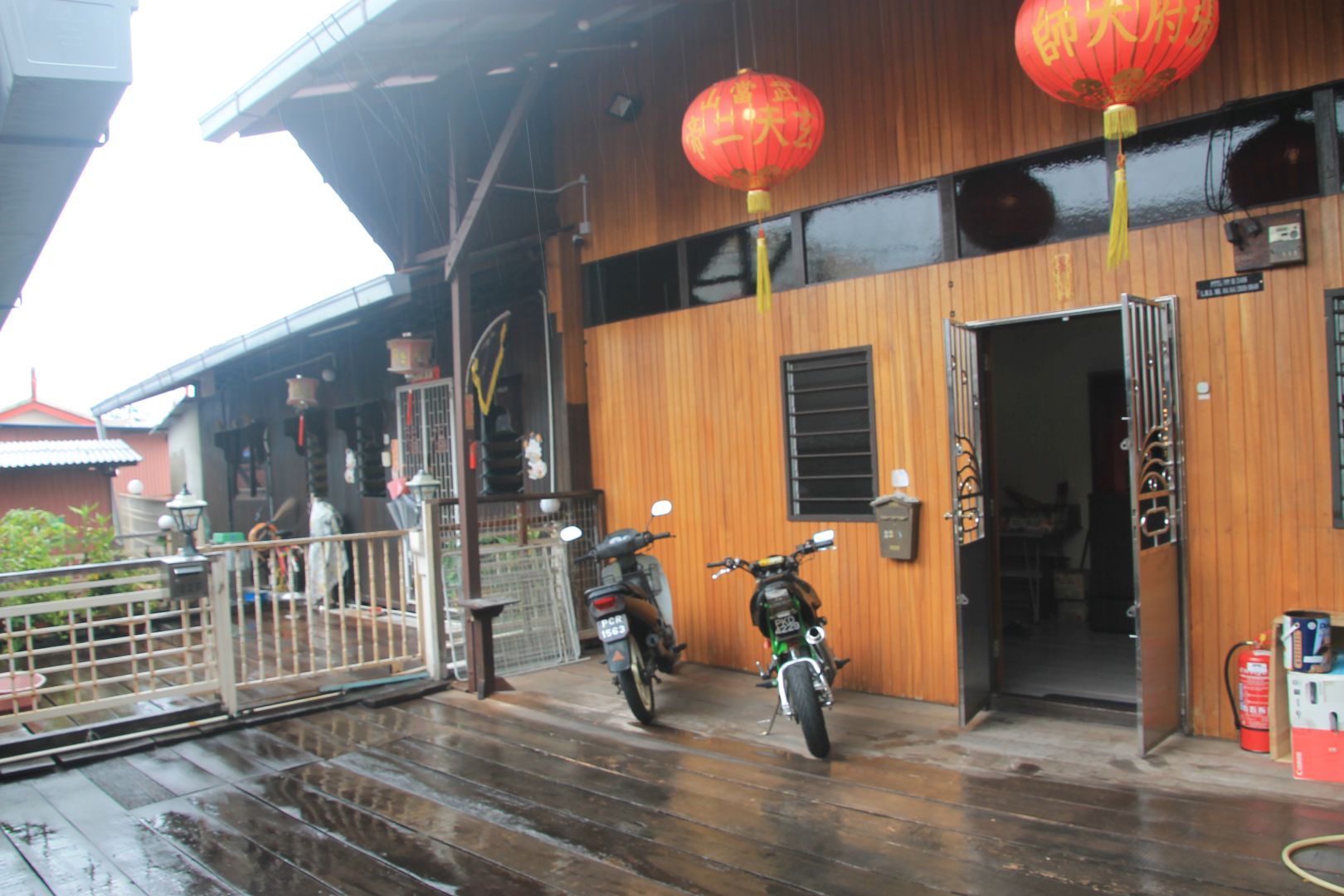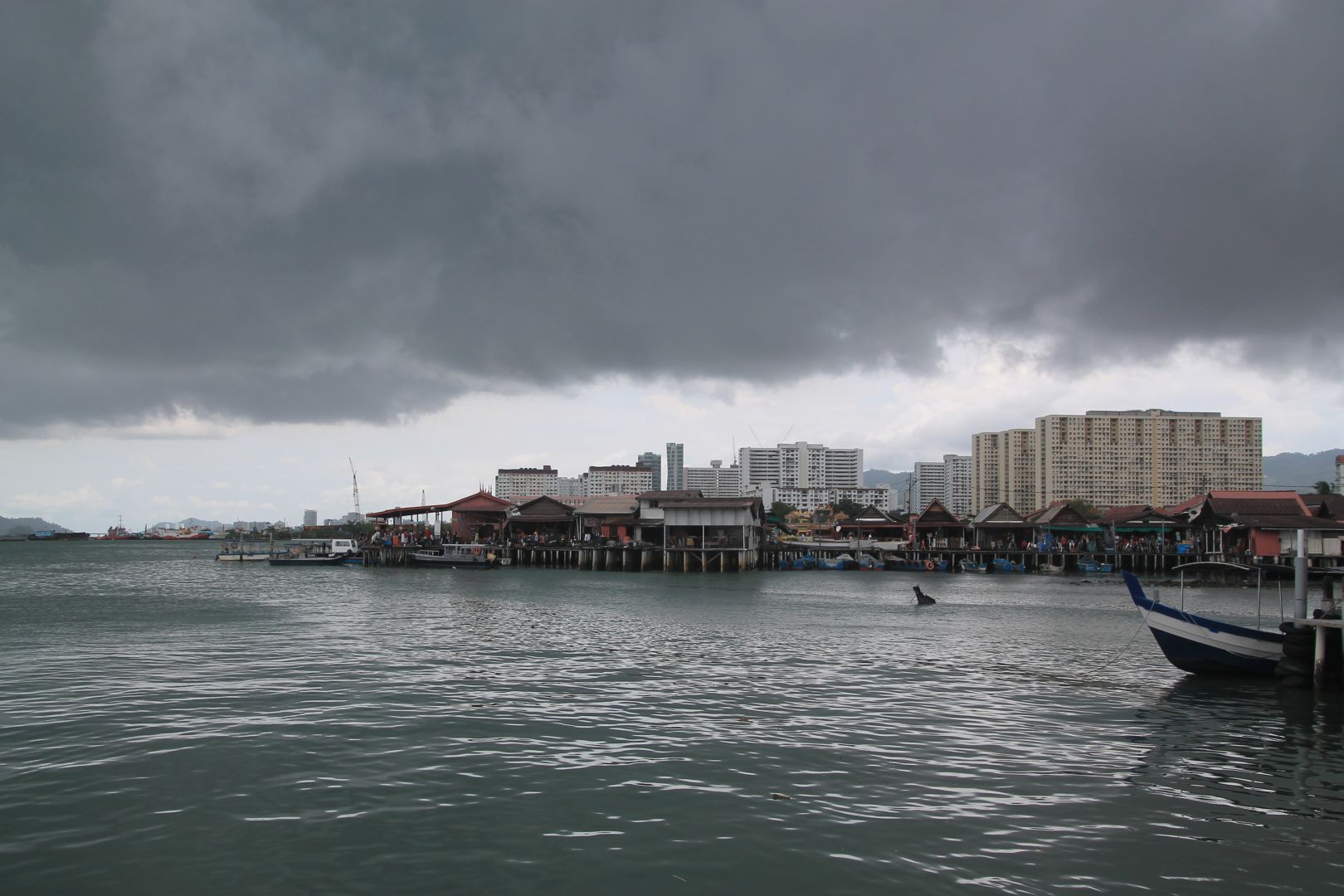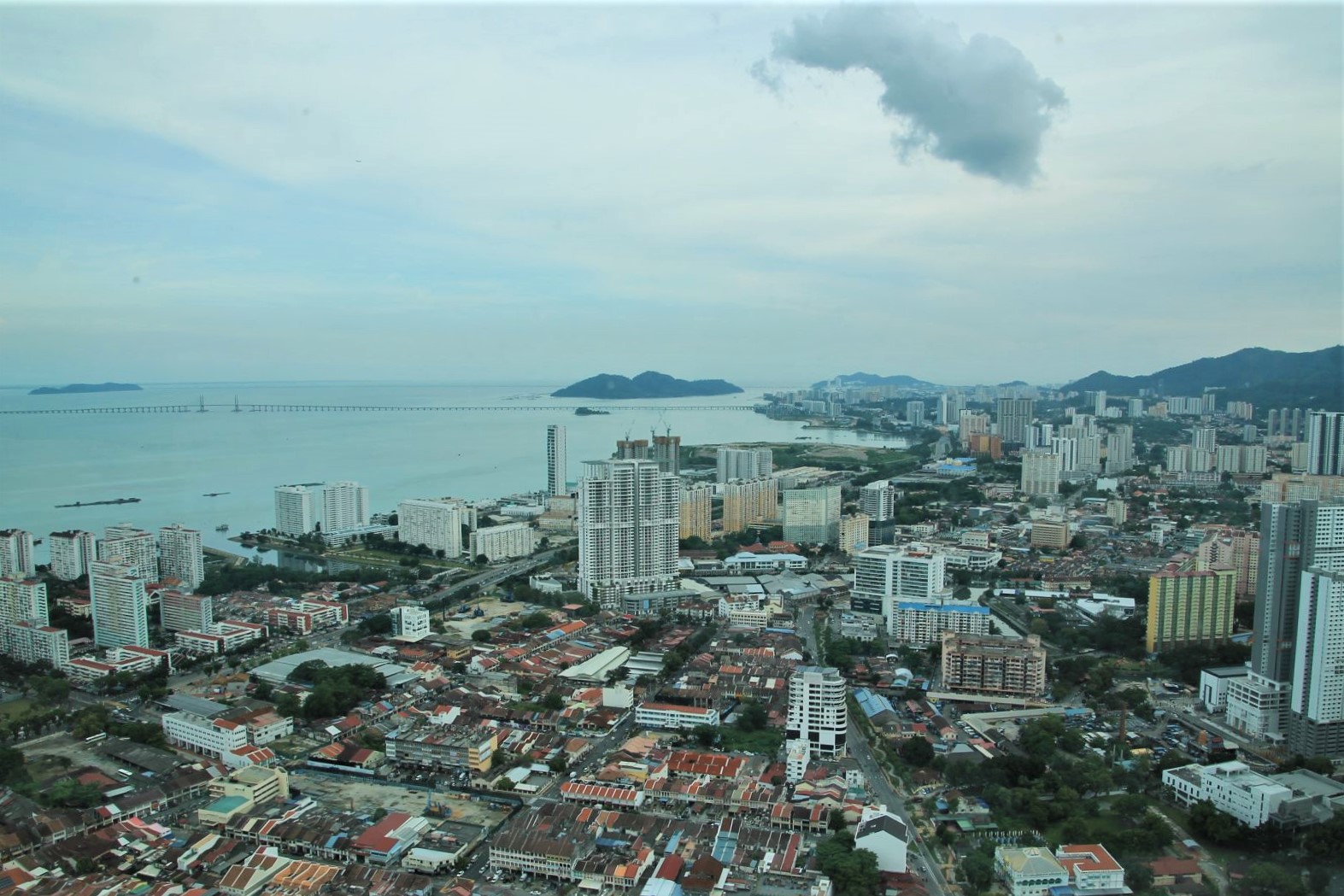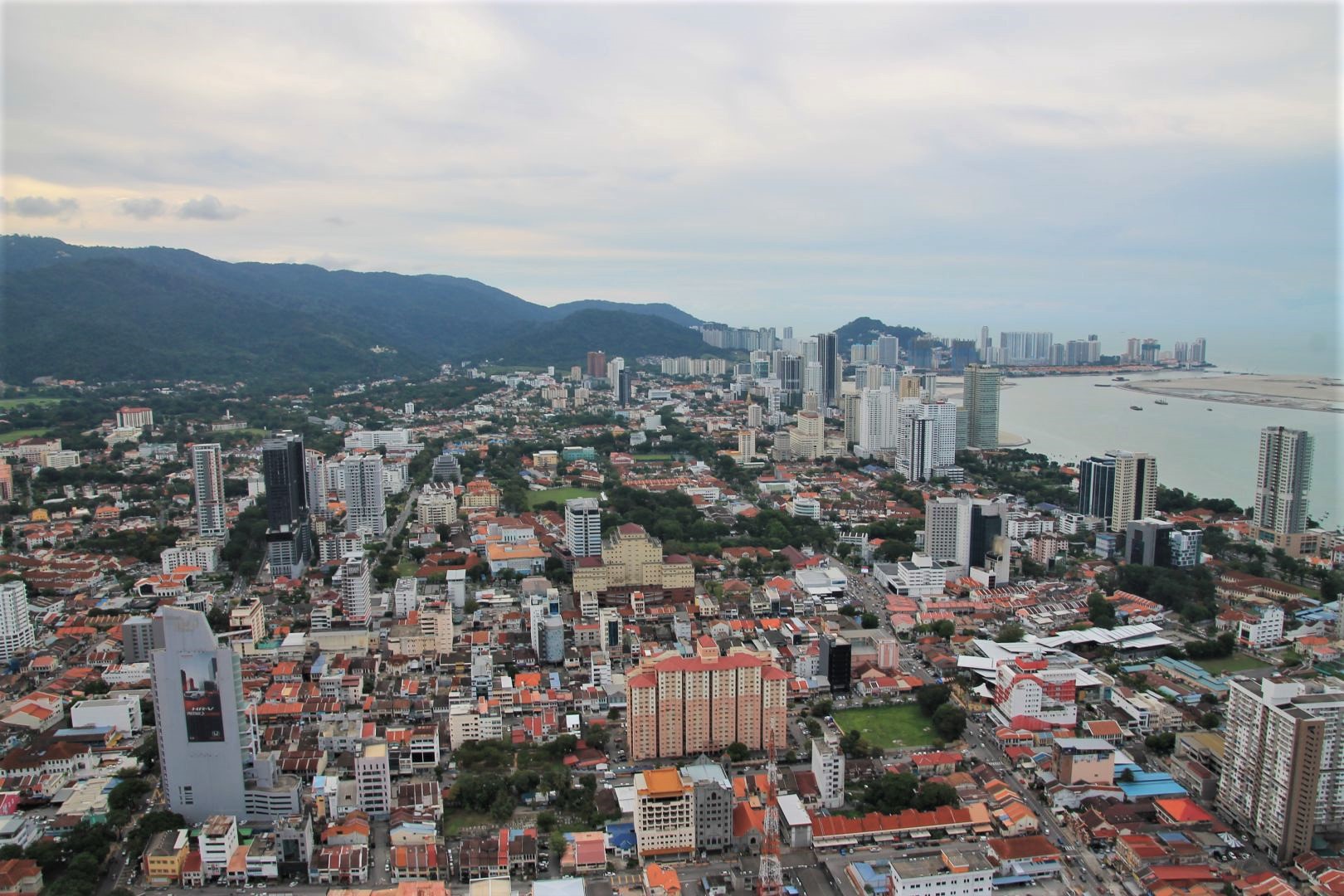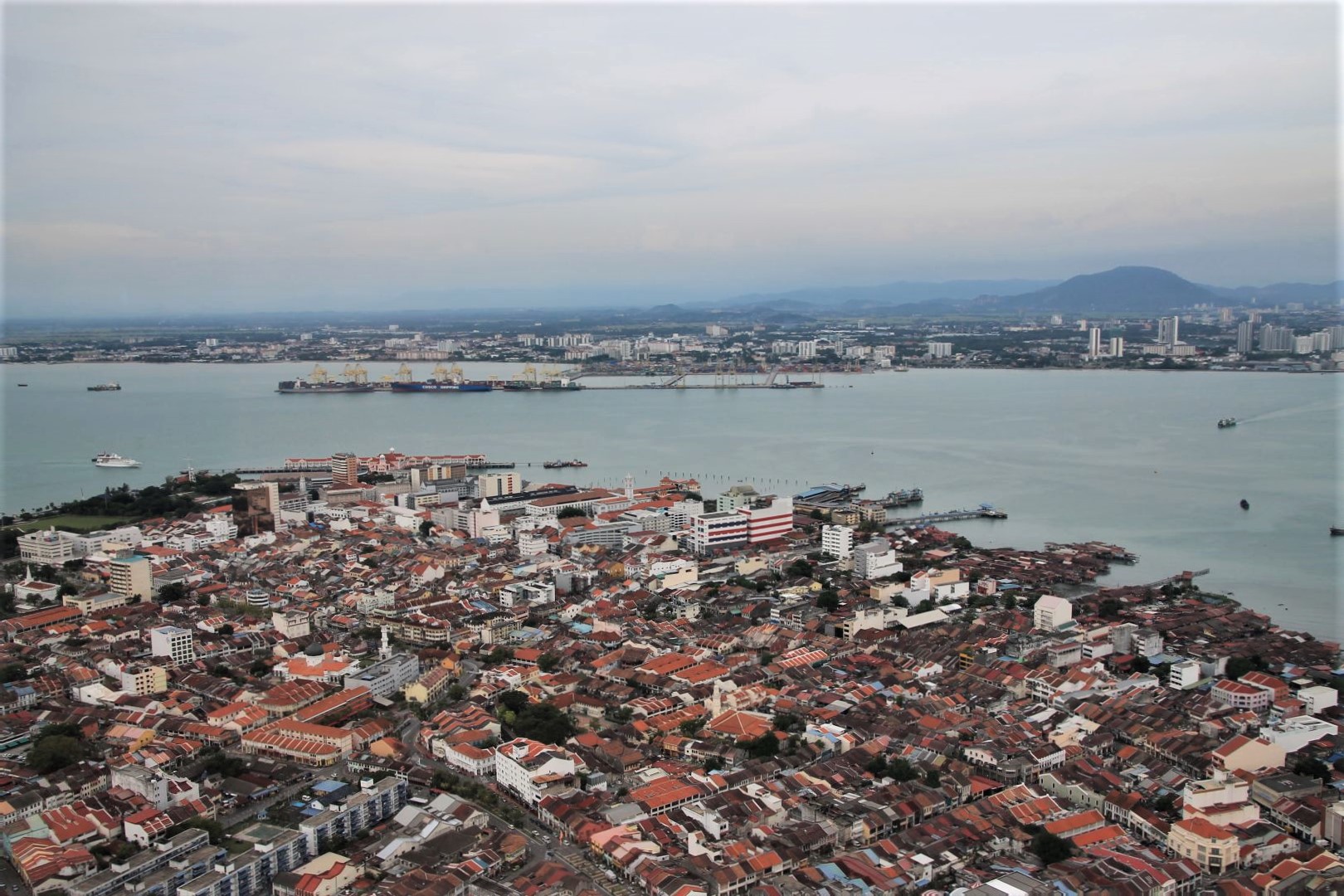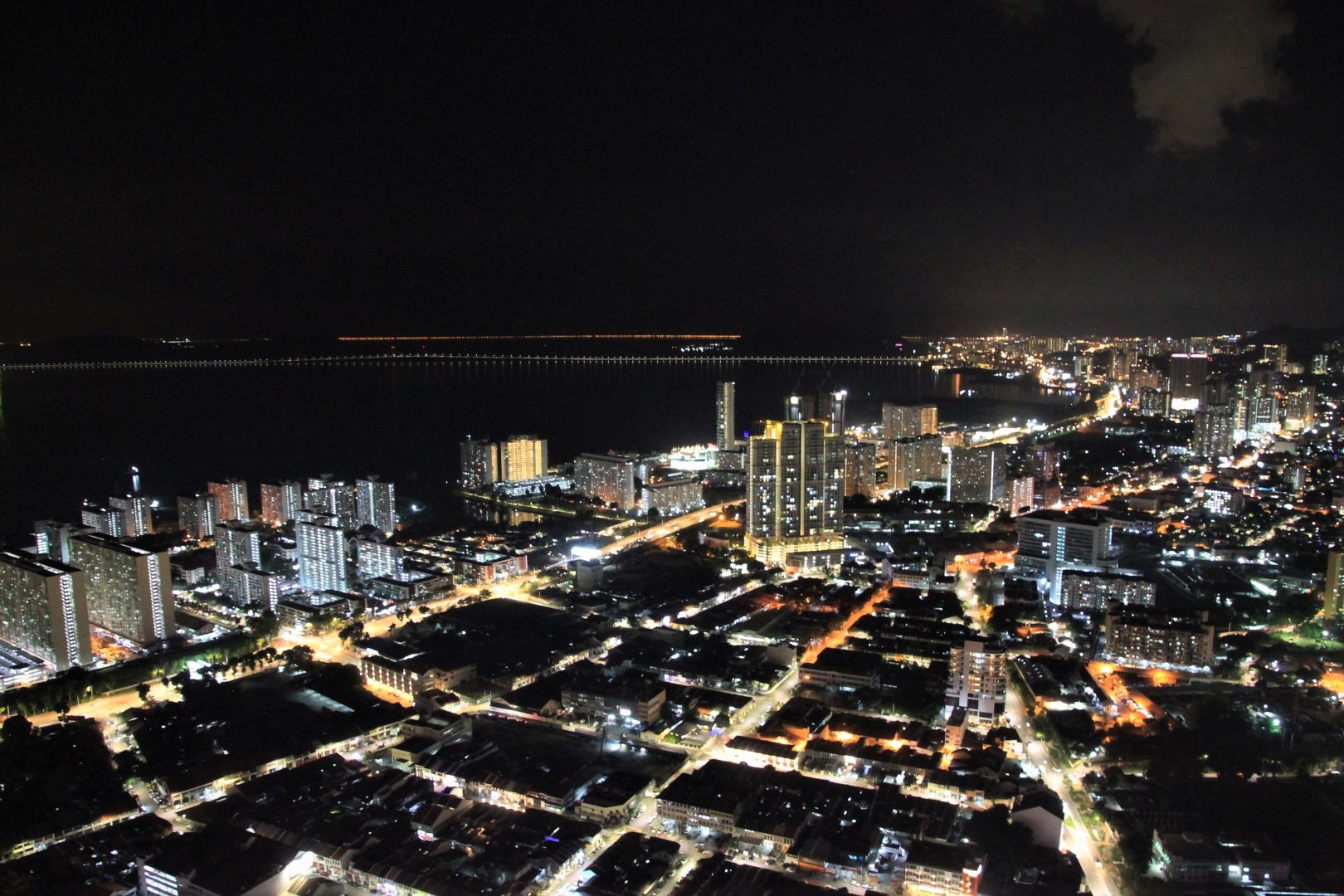Last updated on 20th September 2019
World Heritage Old George Town
One hour flight from Phuket made Penang my ideal destination to start exploring Malaysia. George Town, its capital and also the second largest town in the country, was luring with its famous cultural heritage, promises for delicious streetfood and it’s popular street art.
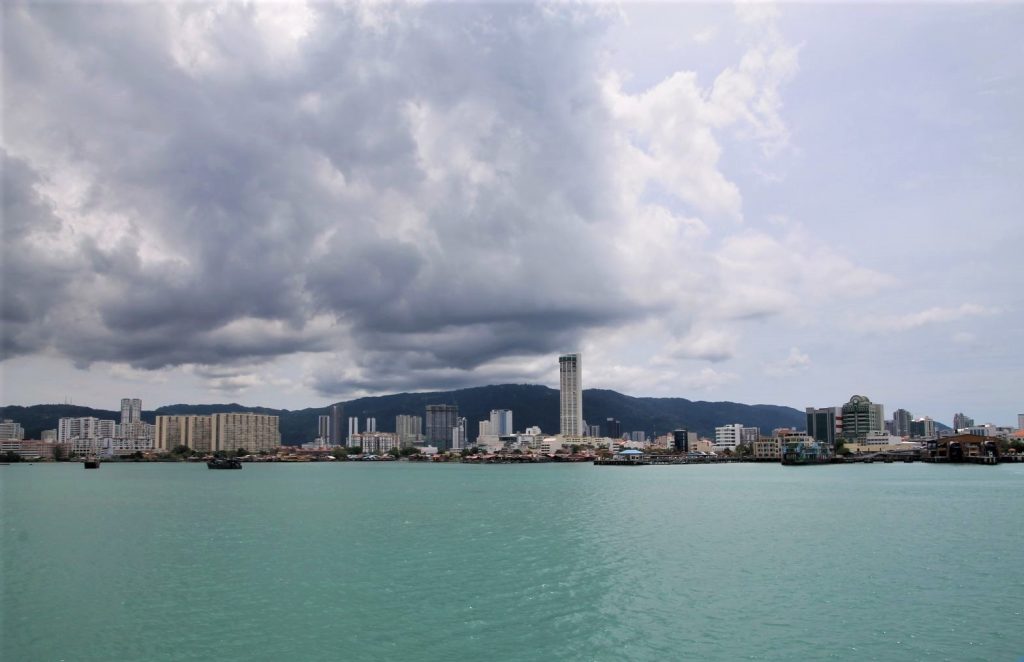
What I found
What I found was a town, that is a little like Phuket Old Town, but much bigger, more diverse and much more modern. When the British East India Company, namely Sir Francis Light, took possession of Penang in 1786, the island became an important stop for traders sailing through the Strait of Malacca, and the once small Malaysian village has grown into the colourful, multicultural and modern city of today. The cities heritage of traditional, colonial buildings merges with modern, commercial architecture. It has buildings from the British era including Fort Cornwallis and the St George’s Anglican Church, which was completed in 1818 and is the oldest in Southeast Asia. Chinese shophouses stand in the shadows of skyscrapers and mosques next to Taoist temples. The Clan Jetties, a tangle of traditional wooden homes on stilts, that extend over the seafront, have been home to Chinese migrants for generations. And as the people so is their food: a medley of Chinese, Malay, Thai, Indian and Sri Lankan.
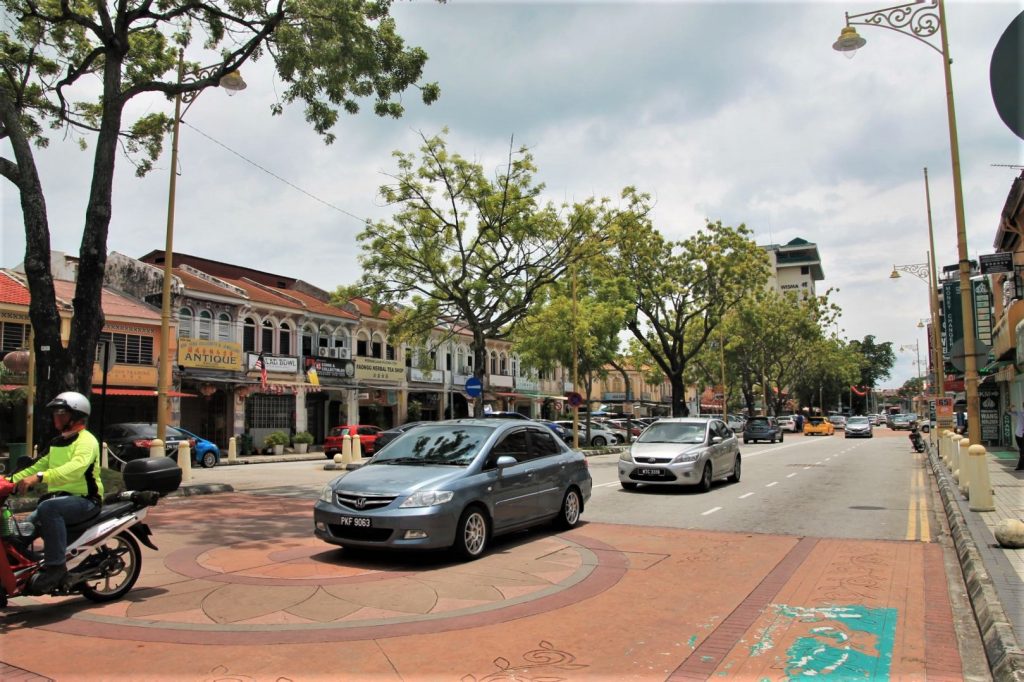
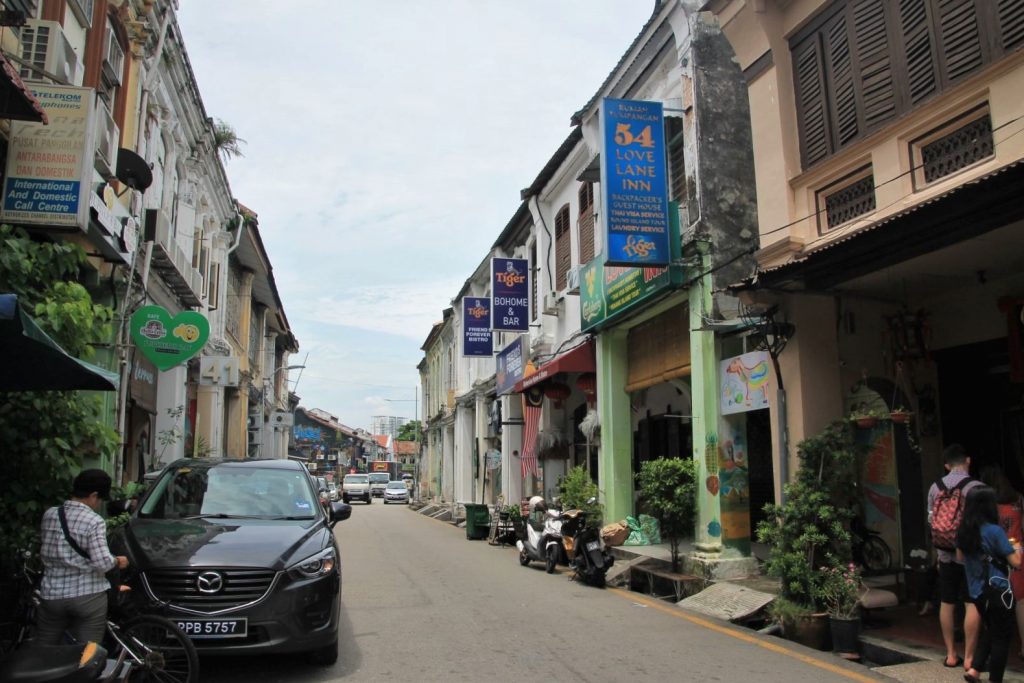
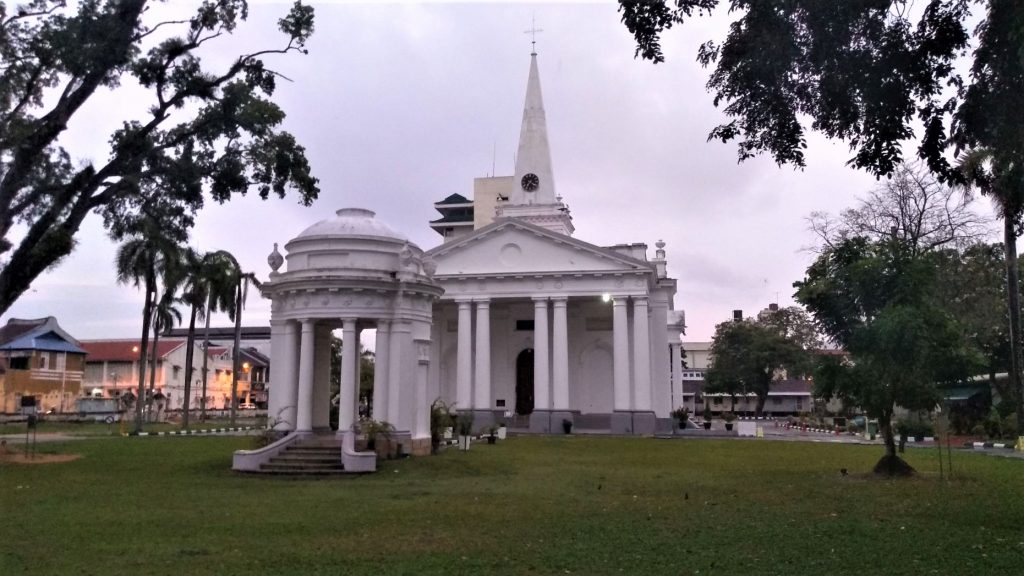
To get around
To get around is very easy as George Town has a well working public transport system with buses. Also there are plenty of bicycles available, waiting on every other corner, to be rented via smartphone app. The old town is small enough to be explored by foot. And of course there are taxis and scooters, and more traditional still some cycle-rickshaws.
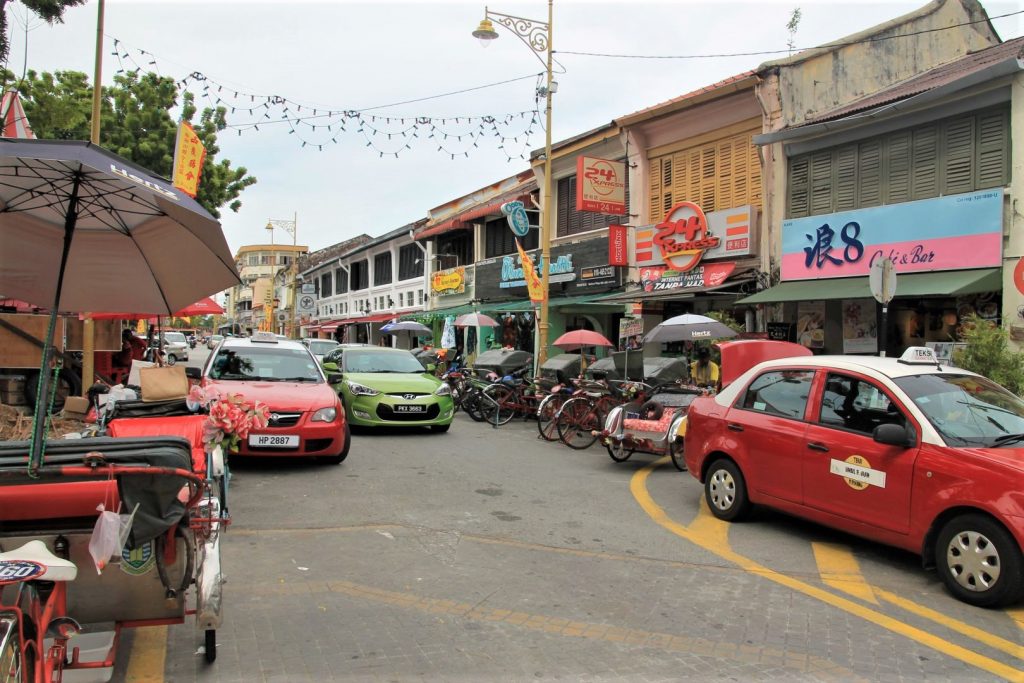
Best places to visit
Fort Cornwallis. The star shaped Fort Cornwallis stands at the place where Francis Light and his crew landed in 1786 to take possession of Penang Island from the Sultan of Kedah in 1786. At first a stockade made of palm trunks was erected upgraded 1804 by a brick fort. The surrounding moat used to contain a number of buildings from which only the gunpowder magazine still stands. Fort Cornwallis is the largest standing fort in Malaysia but was never engaged in any combat during its operational history. It is named after the Governor-General of Bengal Charles Cornwallis. Entrance fee is 20 Ringgit. It is fascinating watching the ocean from behind the massive historical cannons. Even in the rain, which was my privilege to enjoy.
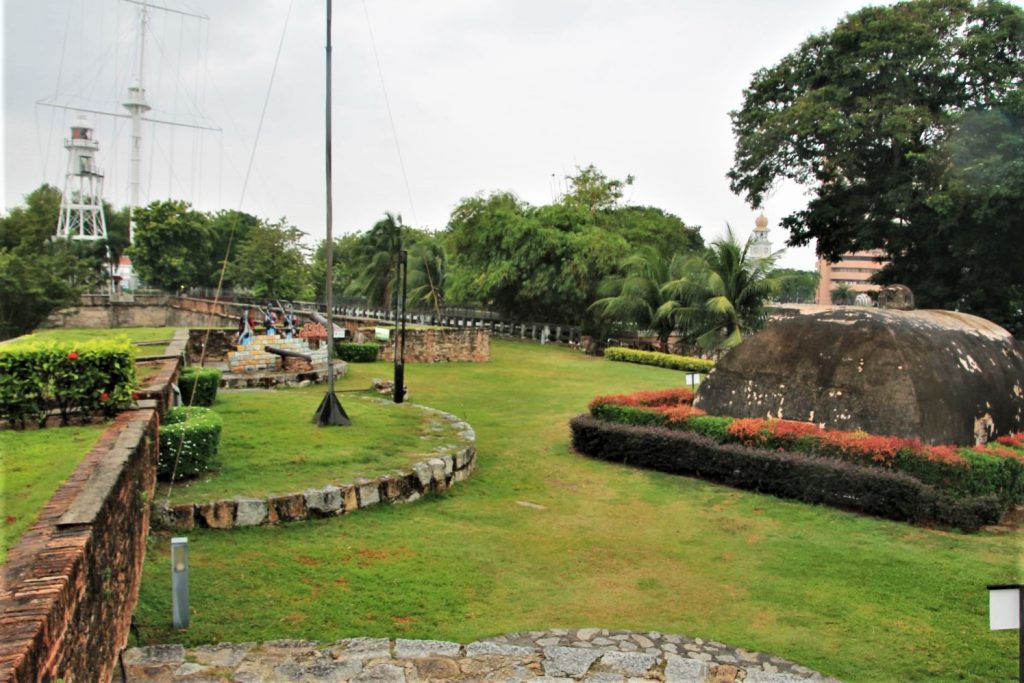
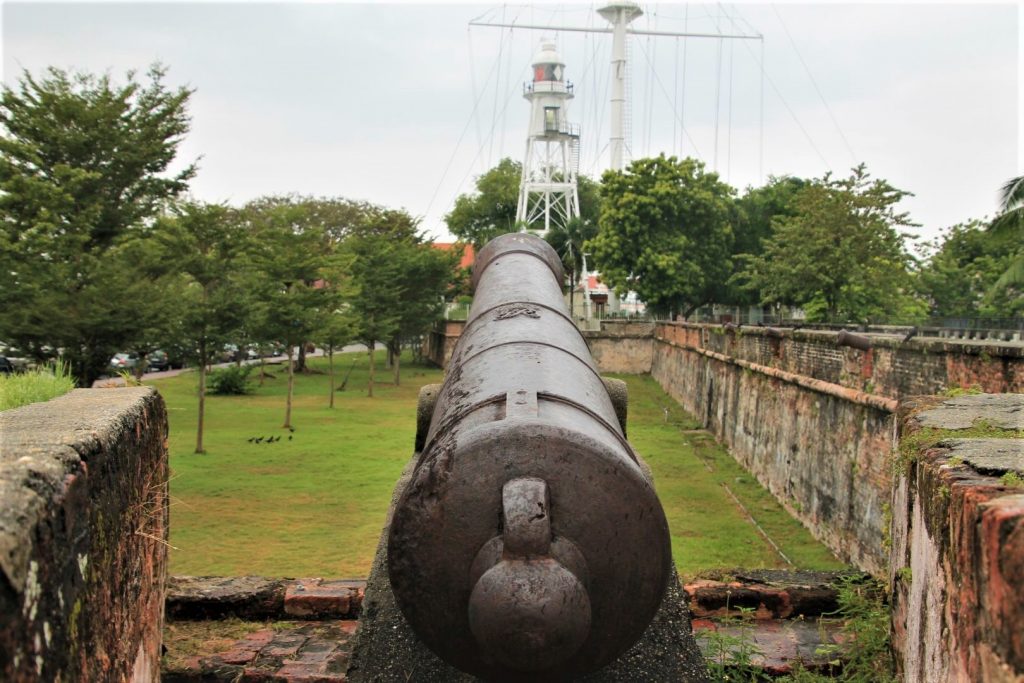
Queen Victoria Clock Tower. The Queen Victoria Memorial Clock Tower is a testament to Penang’s royal connections. Commissioned in 1897 by local millionaire, Cheah Chen Eok, to commemorate Queen Victorias Diamond Jubilee, it stands 60 feet high (18m), which each foot representing a year of the queens 60-year reign. Although it is hardly noticible, due to the impact from bombs being drooped around it during WWII, The Queen Victoria Memorial Clock Tower leans to one side, much like the leaning Tower of Pisa.
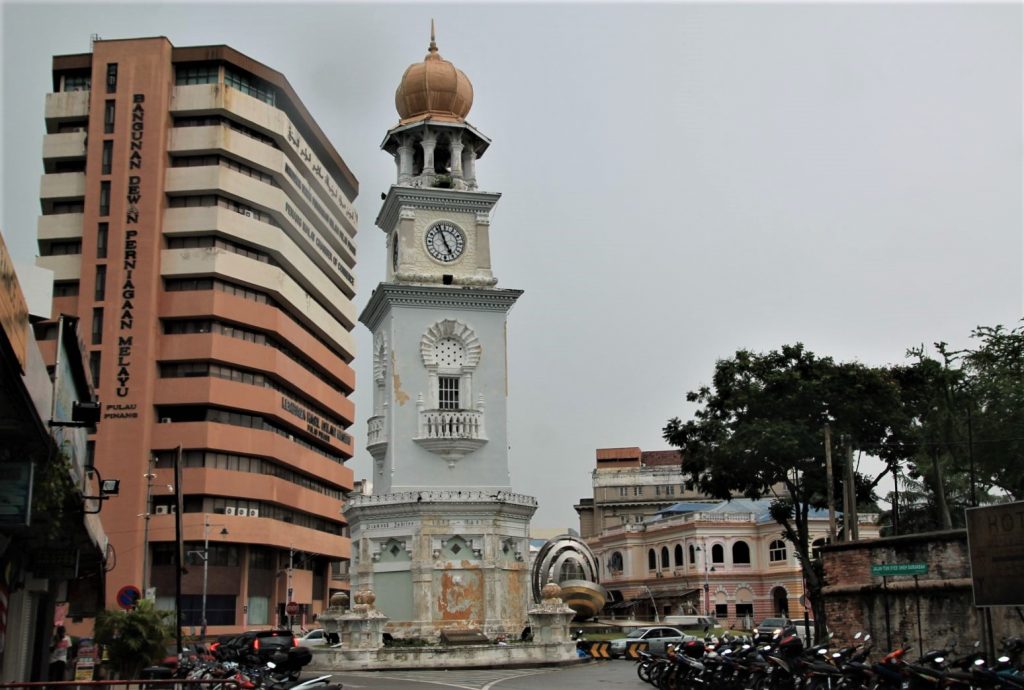
Kapitan Keling Mosque. Kapitan Keling Mosque was built in 1801 by Penang’s first Indian Muslim settlers (East India Company troops). “Keling” is a Malay term for people of Indian origin. The “Kapitan” was a representative, the leader of the Indian community. The mosque is part of the World Heritage Site of George Town. It impresses with its splendid white colour, topped with large golden-yellow domes, crescents and stars, and with the immense size and height of the central prayer hall. To go inside women have to wear some sort of full-body cloak which they hand out free of charge.
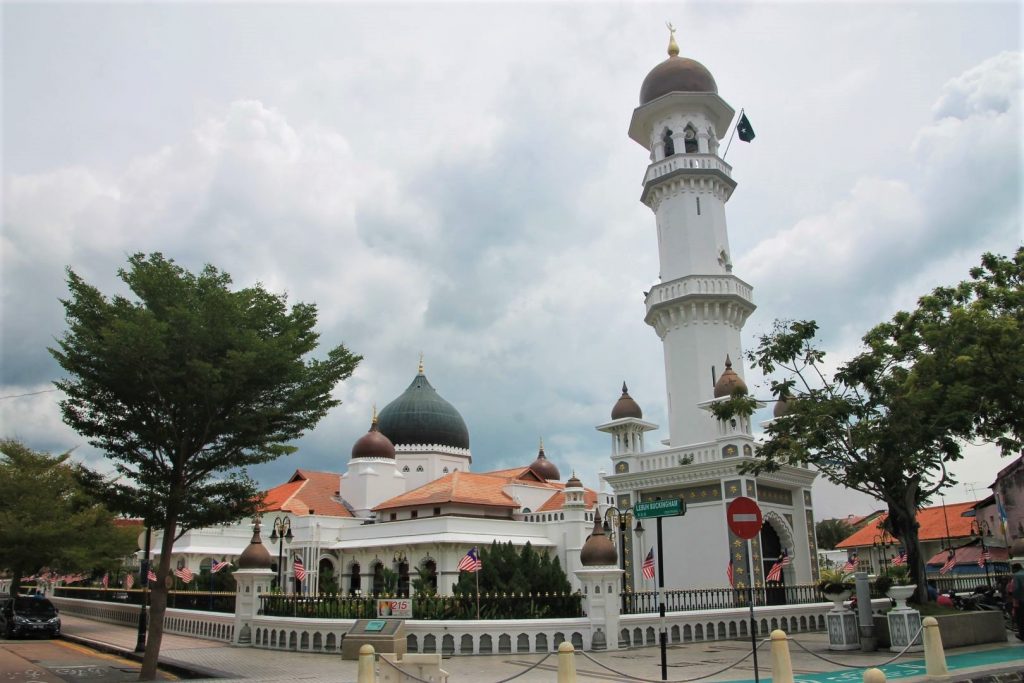
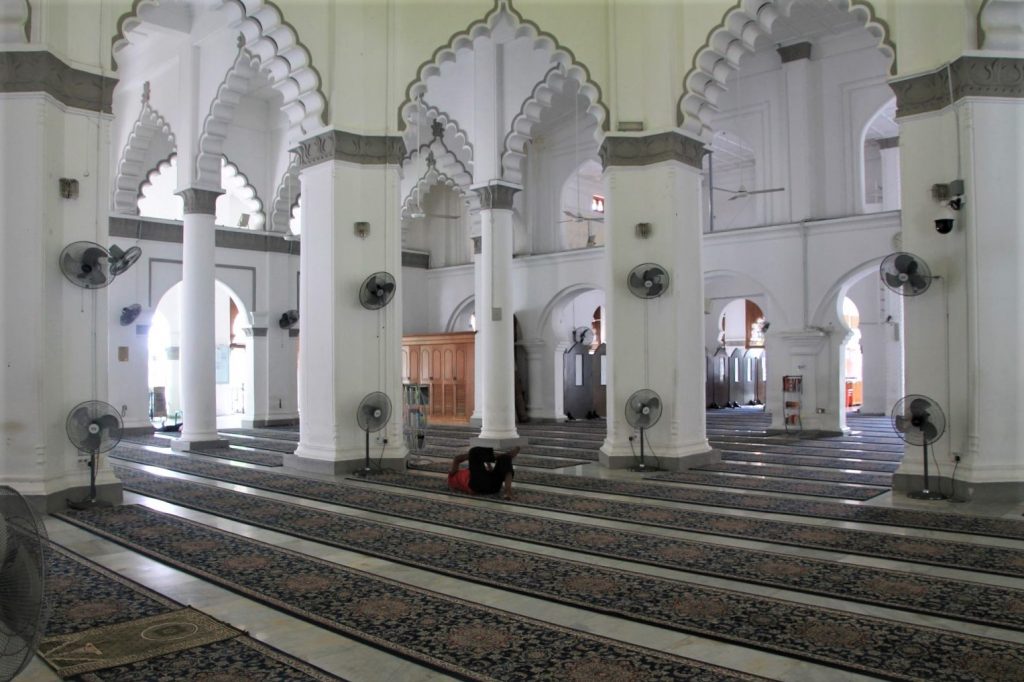
Temples. There are many Chinese temples in Penang, due to the sheer number of Chinese inhabitants in the community, and their prosperity. Among them is Kek Lok Si the largest and arguably the best known Chinese temple in Penang, located little outside the town. The Thai and Burmese communities also built temples in Penang. But while many of the Chinese temples are Taoist by nature, and used for the worship, the Thai and Burmese temples are chiefly Buddhist temples. And finally, there are also Hindu Temples.
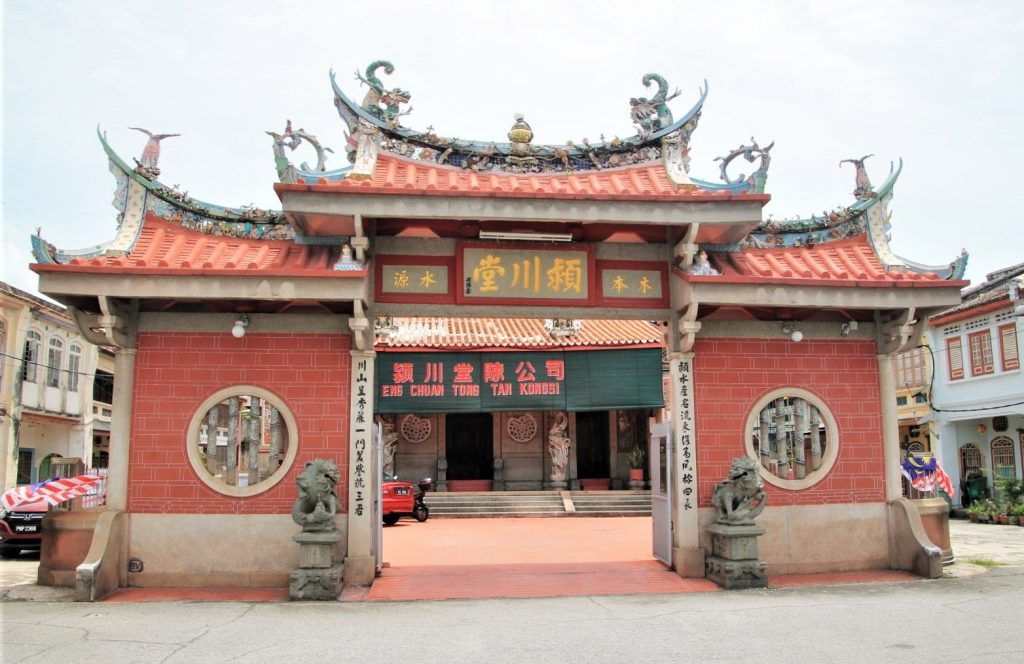
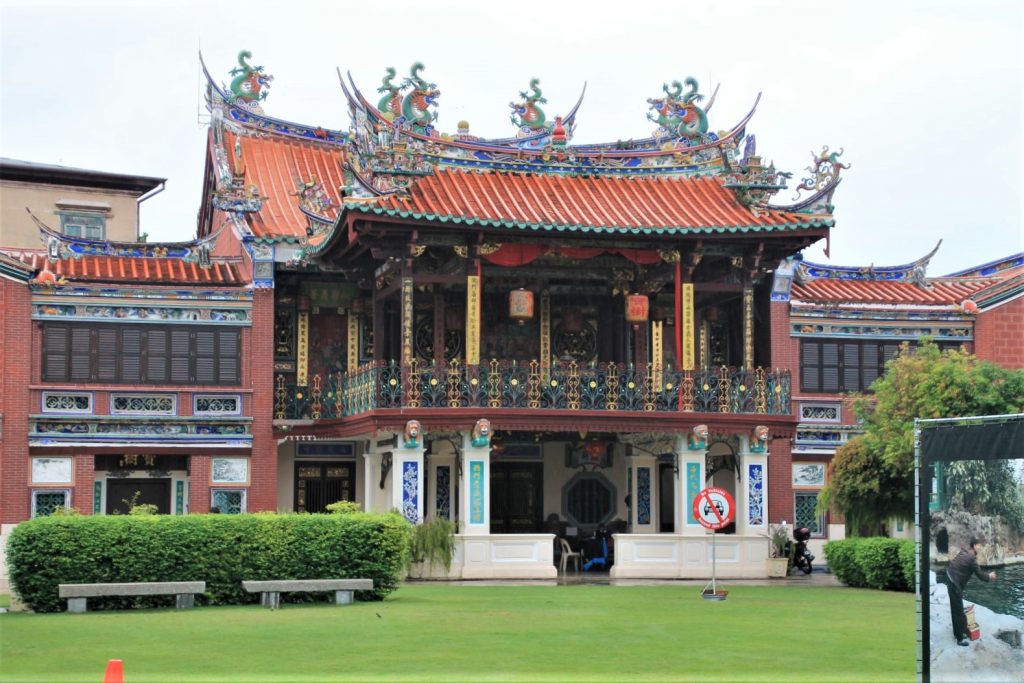
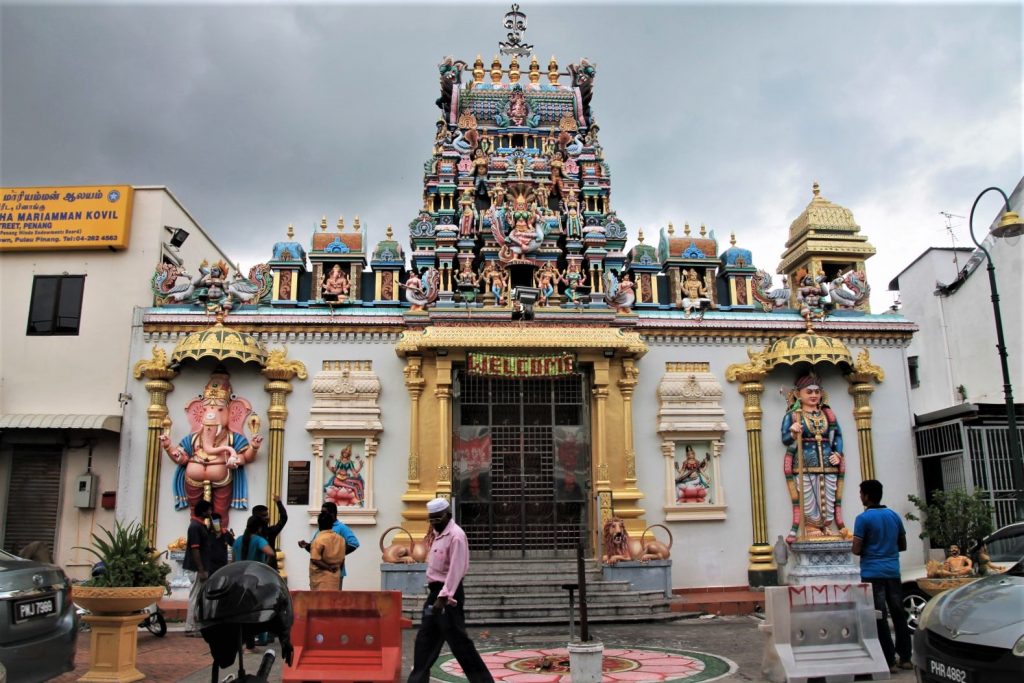
Street Art. The Old City of George Town is packed with colourful, inspiring and startling street art. There are amazing murals, steel sculptures, and wall paintings on every street corner. Some of the murals even involve physical objects, encouraging visitors to interact with the art piece. These are a massive hit among Instagramers and selfie-lovers. The street art expresses the daily life of the people of Penang in a lovely way. Seeing them often put a smile on my face or made me reflect on the local way of life.
Armenian Street. The Armenian Street, or Lebuh Armenian, in the inner city of George Town was fascinating to me as I had been to Armenia just a few weeks before. I learned that the influx of Armenian traders who resided along the road had given the name. The Armenians themself are long gone. The street is full of charming shop houses, artist’s galleries, cafe’s, guesthouses and some of the best of Penang’s street art – like the famous “Children on a bicycle”.
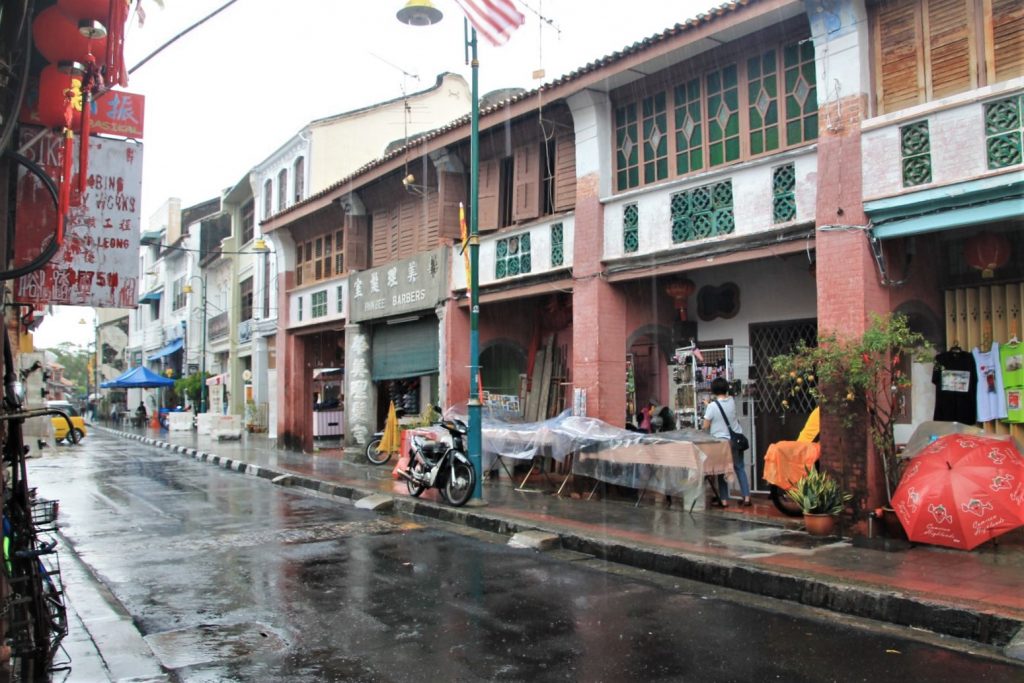
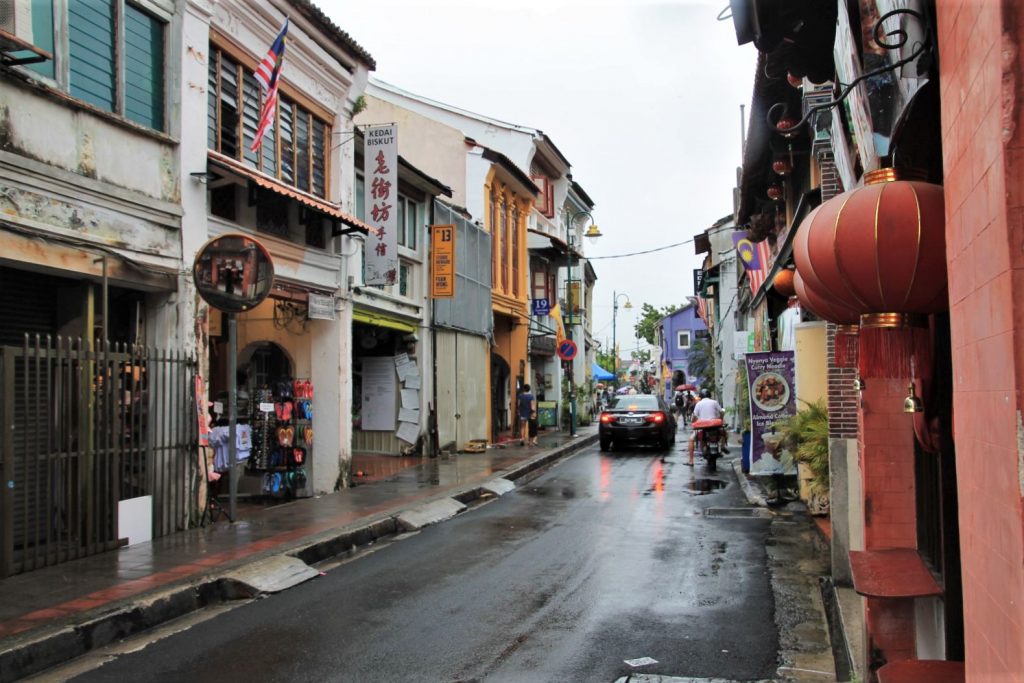
Clan Jetties The south eastern coastline of George Town features water villages with rows of wooden houses on stilts built above the sea and connected by planked walkways. These are the Clan Jetties of George Town. The jetty settlements expanded in the early 20th century at the peak of the immigration waves. Though assured by the British of legal recognition of their houses, these squatters were only given Temporary Occupation Licenses. The Clan Jetties constantly faced the threat of demolition by the authorities who saw their living quarters as no more than squalid slums. Today the Clan Jetties are popular tourist attractions and have changed into shopping malls for souvenirs and food. I personally found them rather disturbing and can’t really avoid sharing the opinion of the officials. The people who live on the jetties do not care a bit about the environment they inhabit which can be clearly seen at low tide. In addition, the habit of their religion makes them burn all sorts of things all the time. The worst was when I had to witness how all the dirt and ashes was thrown into the sea, in front of all tourists’ eyes. I was the only one intervening with no success whatsoever. The water quality around that area is visibly at its worst.
Town Hall and Speakers Corner. George Town has a Town Hall and a City Hall building, both next to the Esplanade in George Town. Shortly after the Town Hall was built in 1880, it was considered to be not spacious enough and another building was built right next to it, which would later be renamed the City Hall when George Town was granted city status in 1957, and to this day, houses the Penang Island City Council. Right in front of both buildings is a huge green and, in English tradition, a Speakers Square.
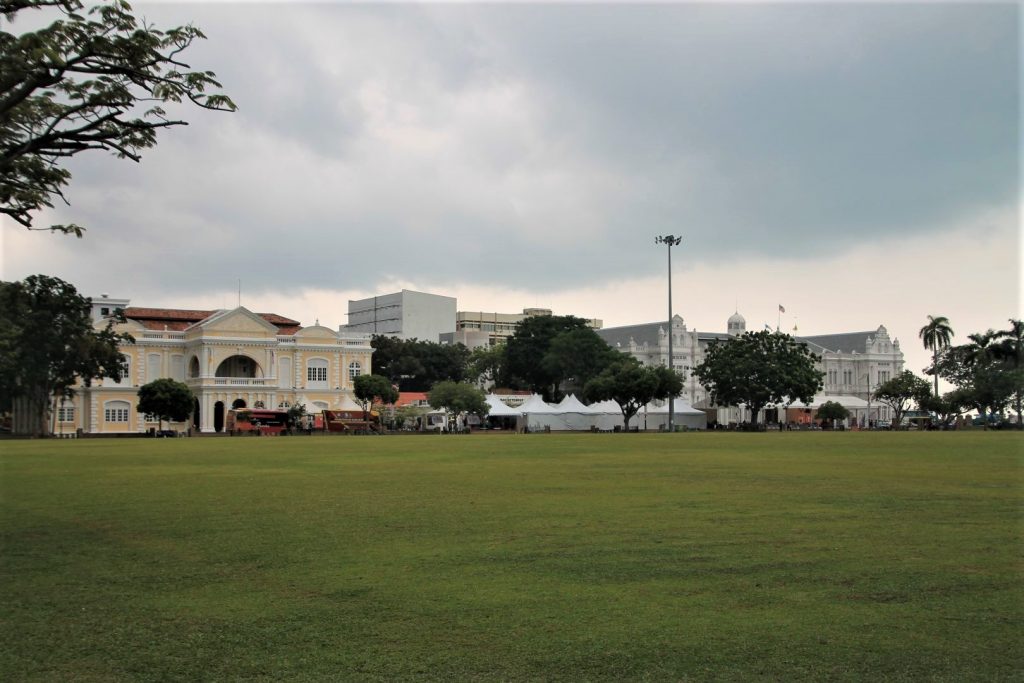
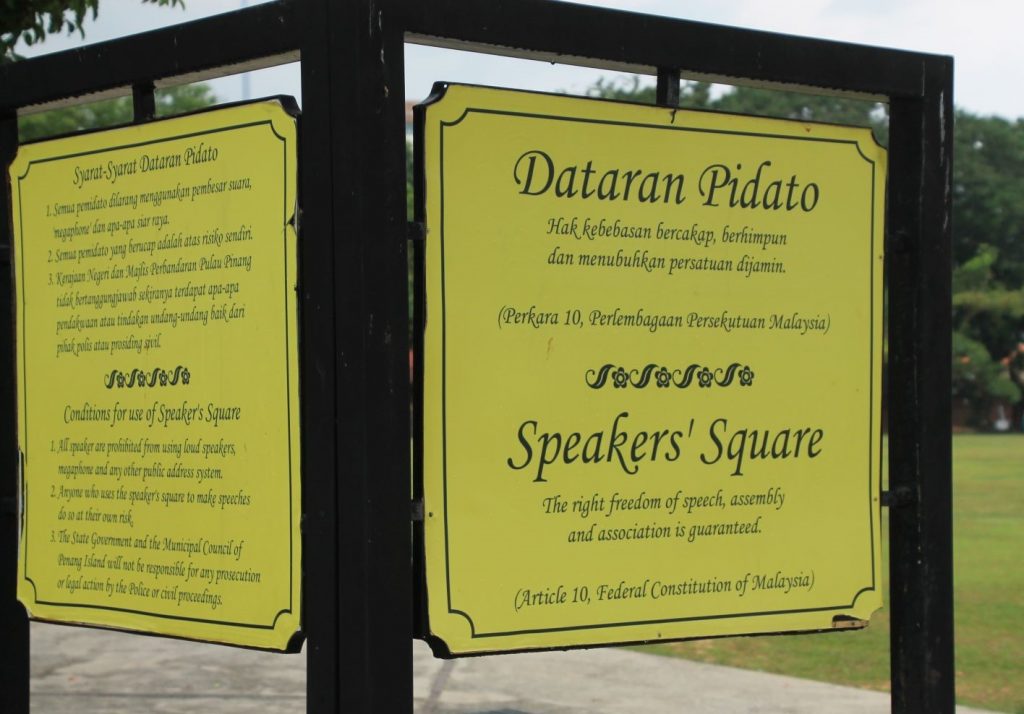
The Blue Mansion. The Blue Mansion is the nickname of the Cheong Fatt Tze Mansion due to its external decorations and indigo-blue outer walls which make the heritage building very distinctive. Built by the merchant Cheong Fatt Tze at the end of the 19th century, it served as Cheong’s private residence as well as the seat of his business activities in Penang. In 1989, some local Penang individuals bought the mansion from Cheong Fatt Tze’s descendants to save it from possible demolition by the surrounding urban development. The mansion has been featured in various films. Today, the property operates as an 18 room hotel and museum. Tours are offered in English three times a day to the central parts of the house only, and I was lucky enough to participate in one of them. But honestly, it’s just a big blue house of some rich Chinese man with excellent marketing.
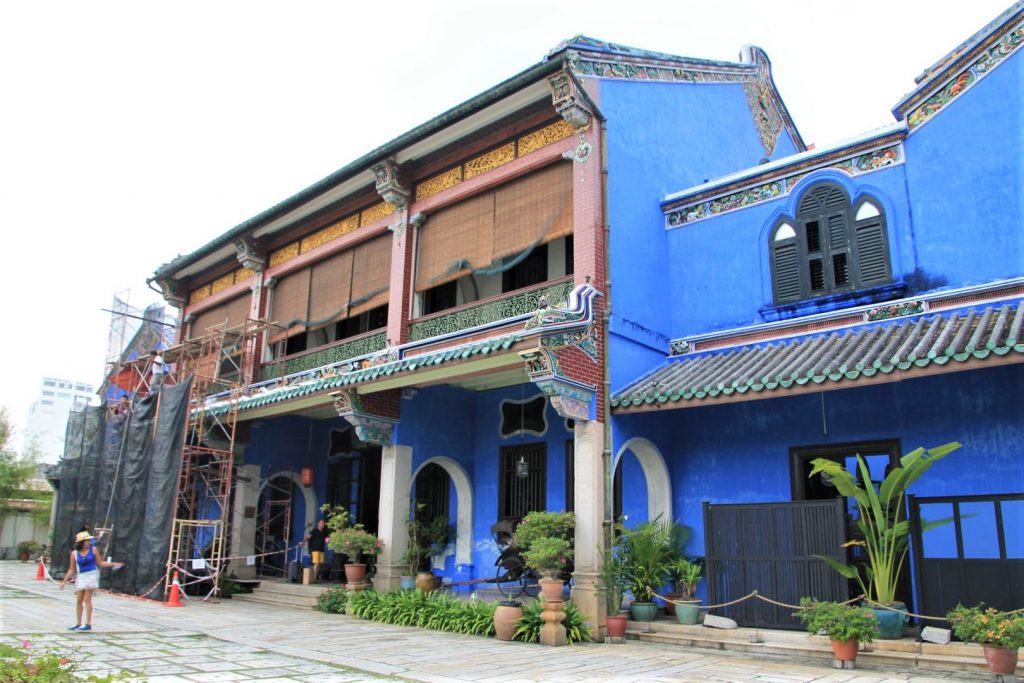
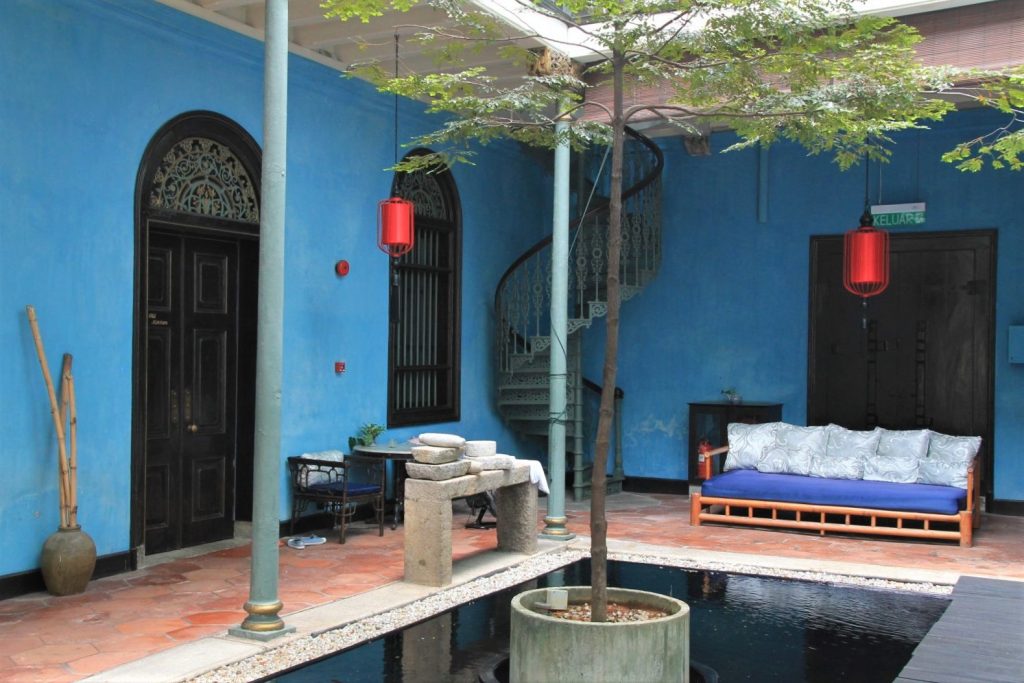
Komtar Tower. This is the highest building in George Town, its 65 floors were extended to 68 floors recently. “The Top” is the entertainment area on the upper floors. Going up there costs 68 Ringgit, one Ringgit for each floor I believe. It is a real adventure. Not only that the view is stunning, so is the presentation: from the elevator they lead people into a dark room where short video about the history of building the tower is shown, just 30 seconds, advertising the wonderful view. And then suddenly the screen everone was looking at opens and and unveils the stunning view through the window at the city. That left me very impressed. There is a restaurant and an open air bar on the top floor providing a real 360° view at George Town, and a glass bottom skywalk. The highlight is surely on the 65th floor: an outside walkway around the building. Amazing!
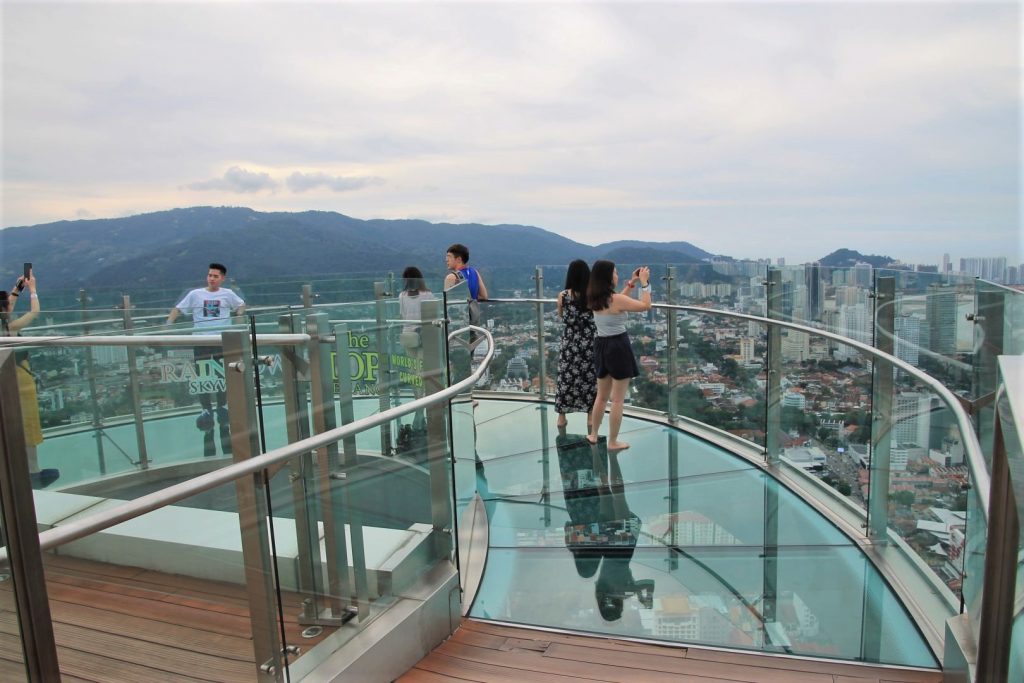
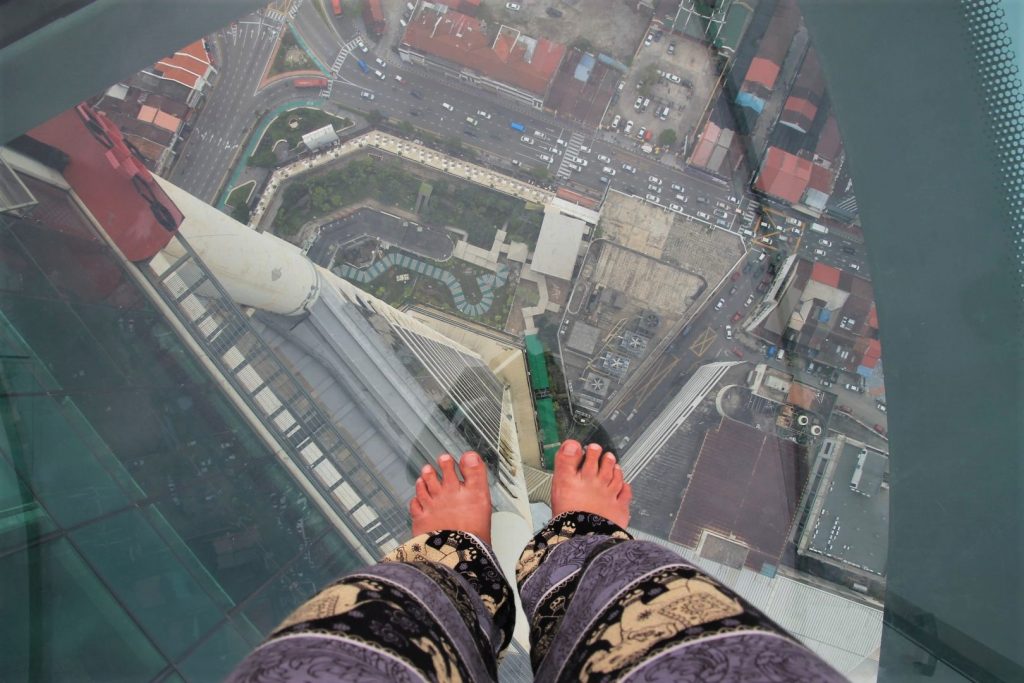
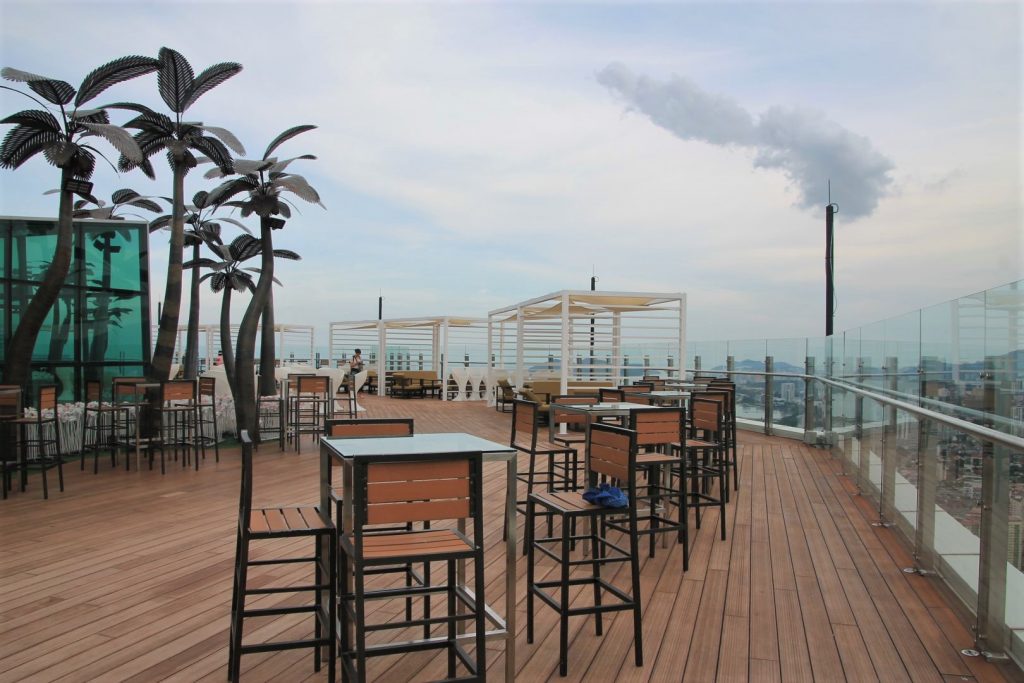
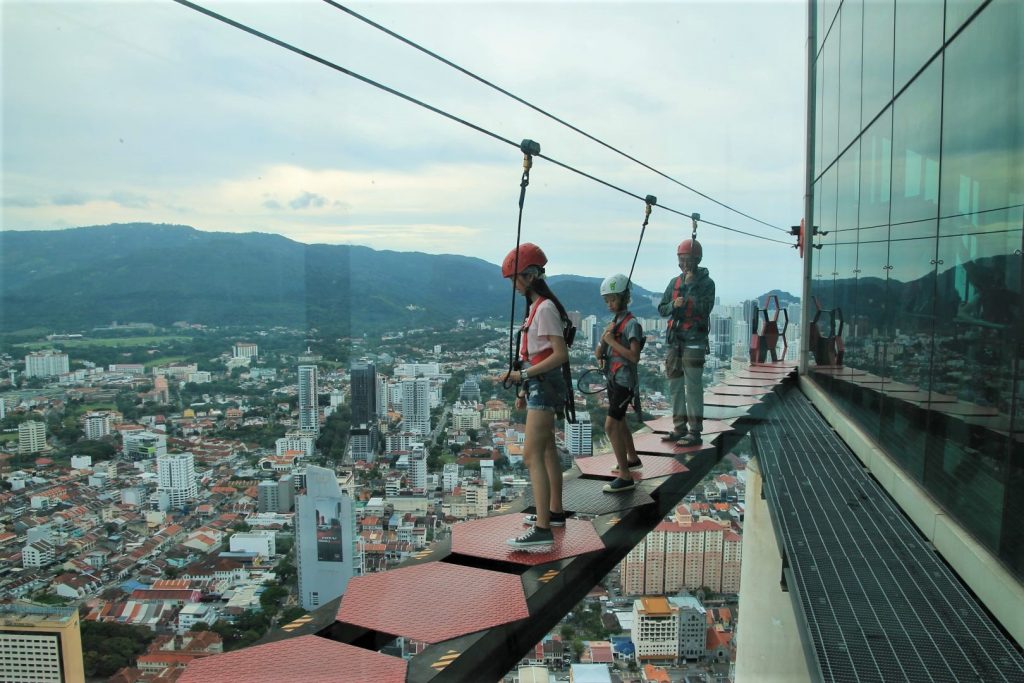
And there is more to see. Apart from the fascinating George Town city center there are at least three things of much interest that I found worthto be encountered: Penang Hill, Penang National Park and Kek Lok Si Temple. I will cover them in my next blog entry.
I am leaving Penang by ferry to go north to Langkawi to check out the ultimate holiday destination of Malay people.

